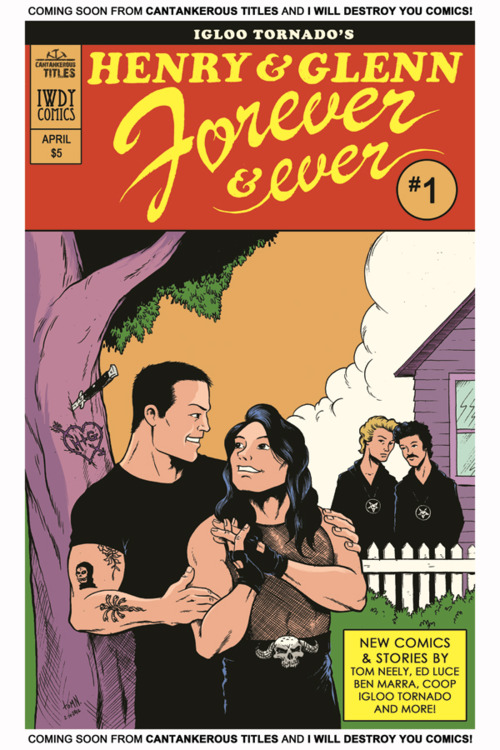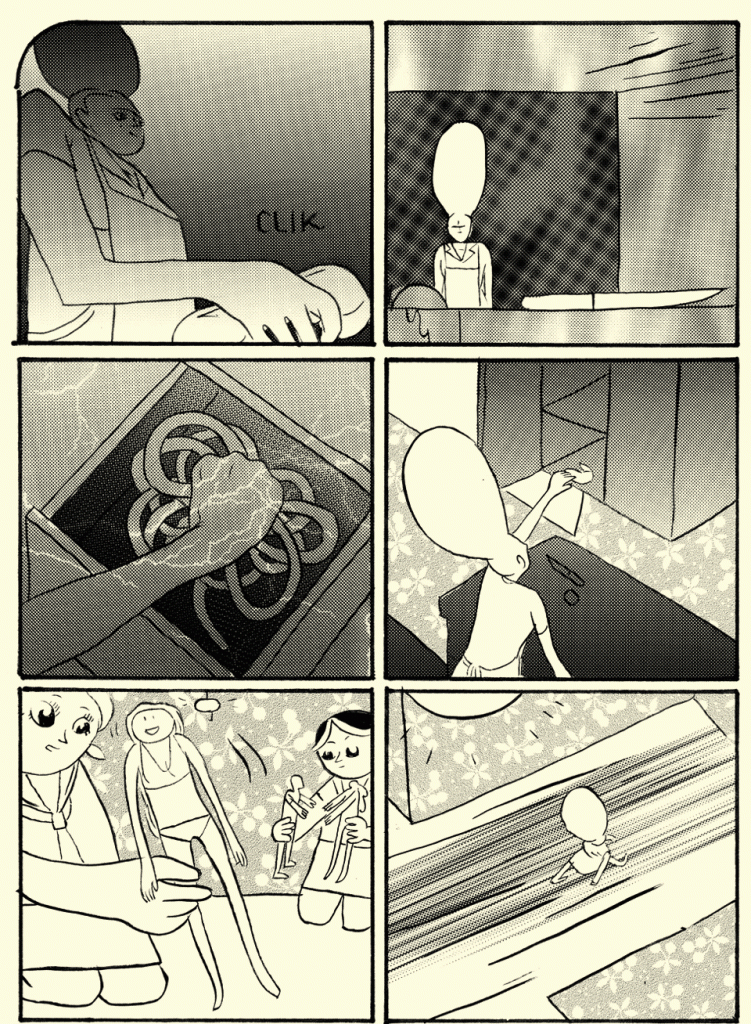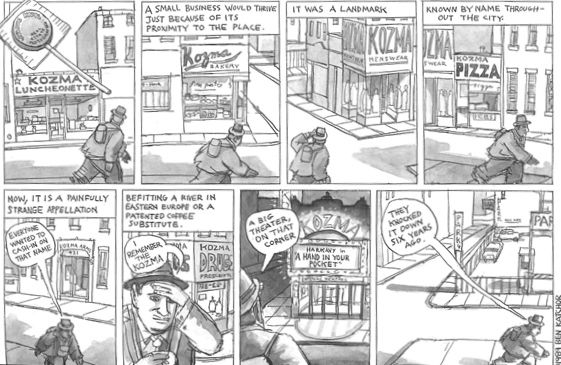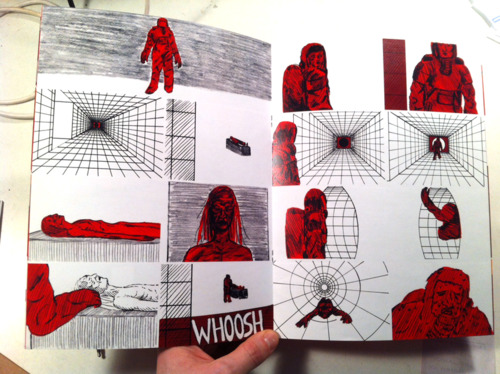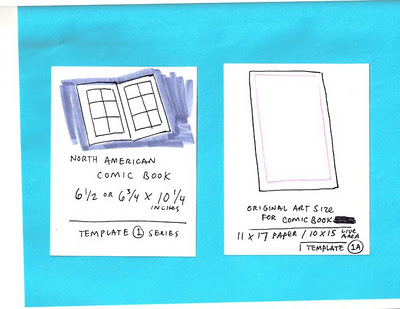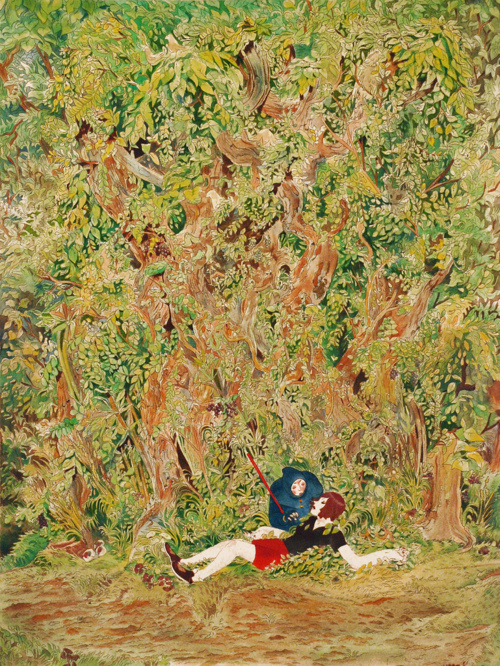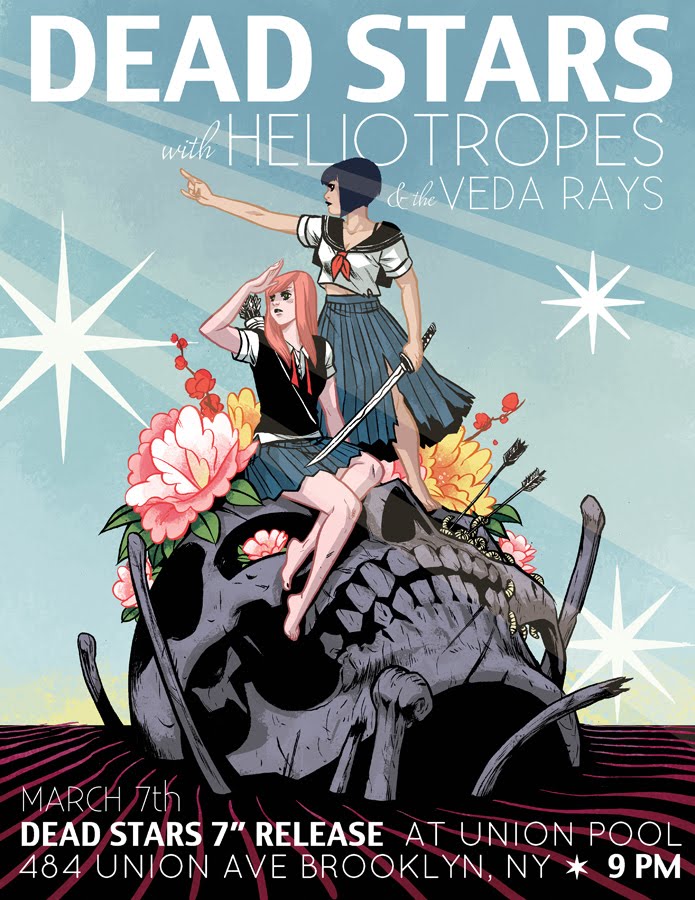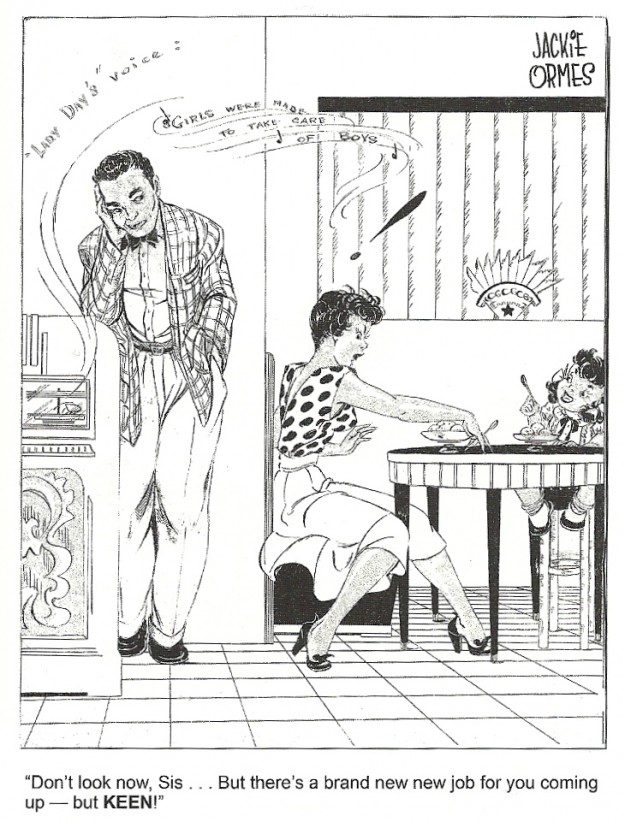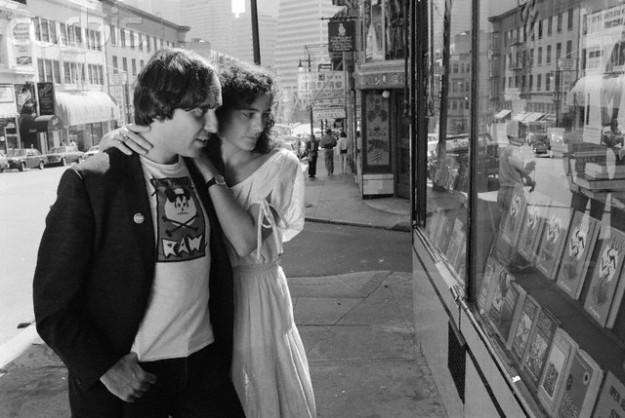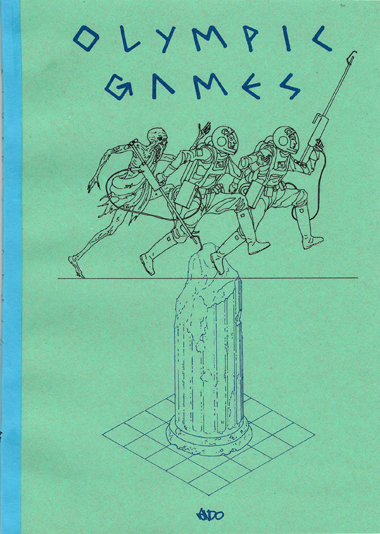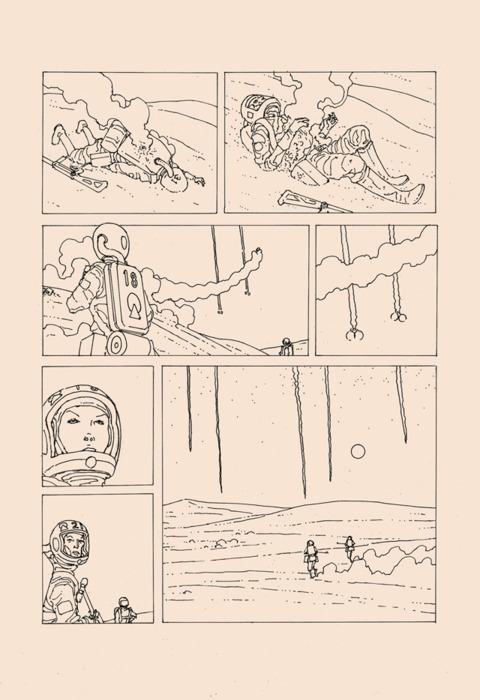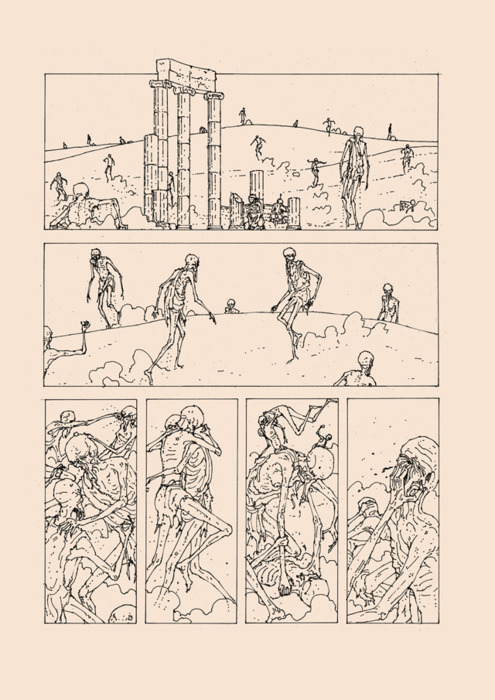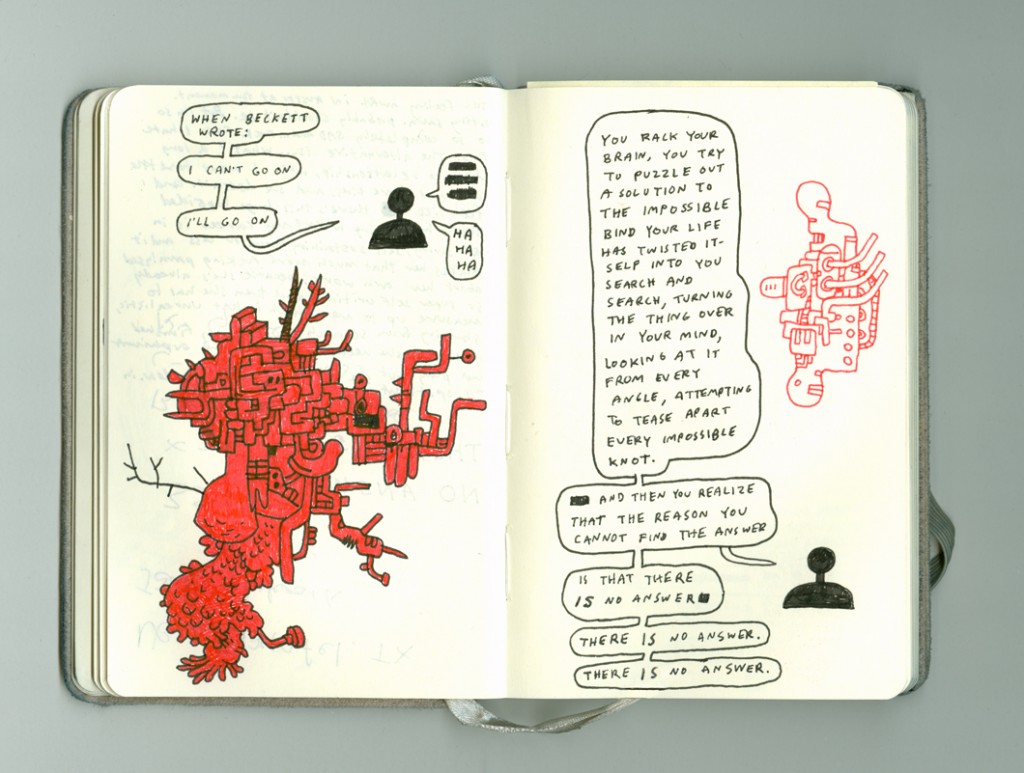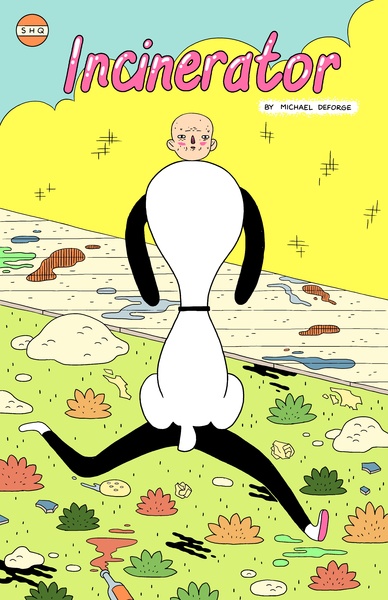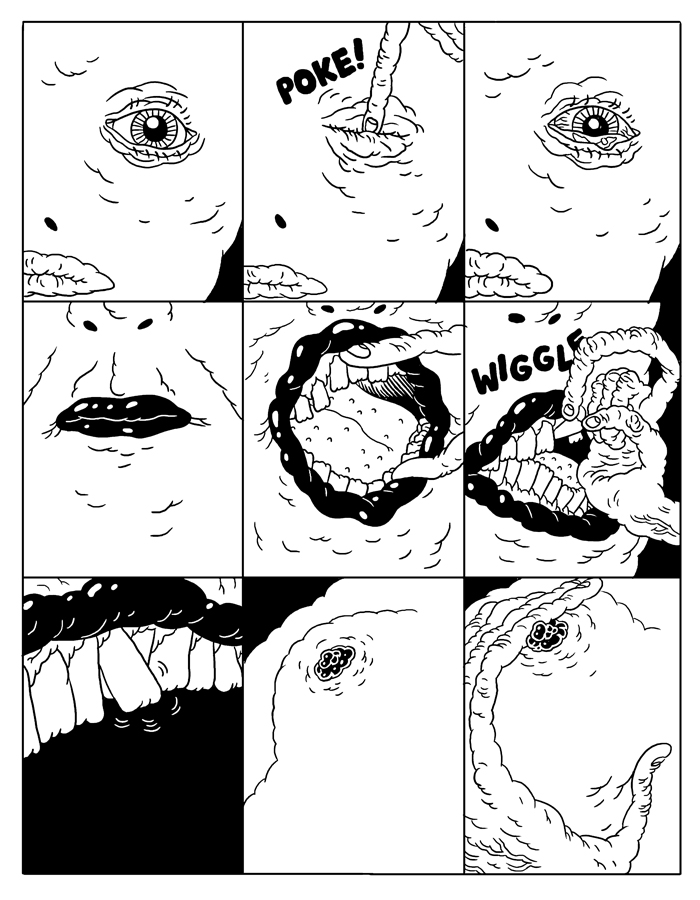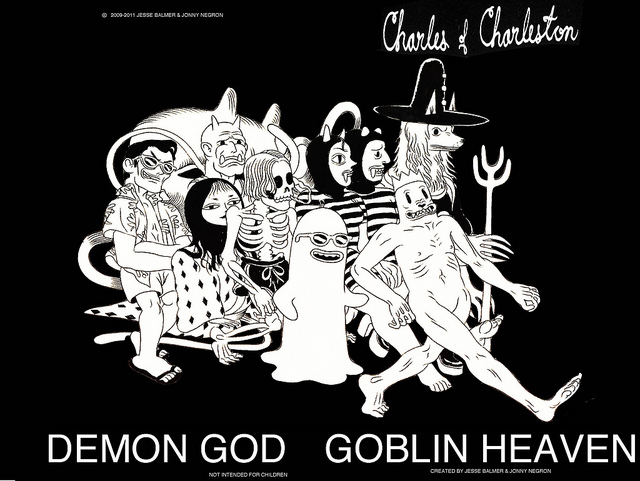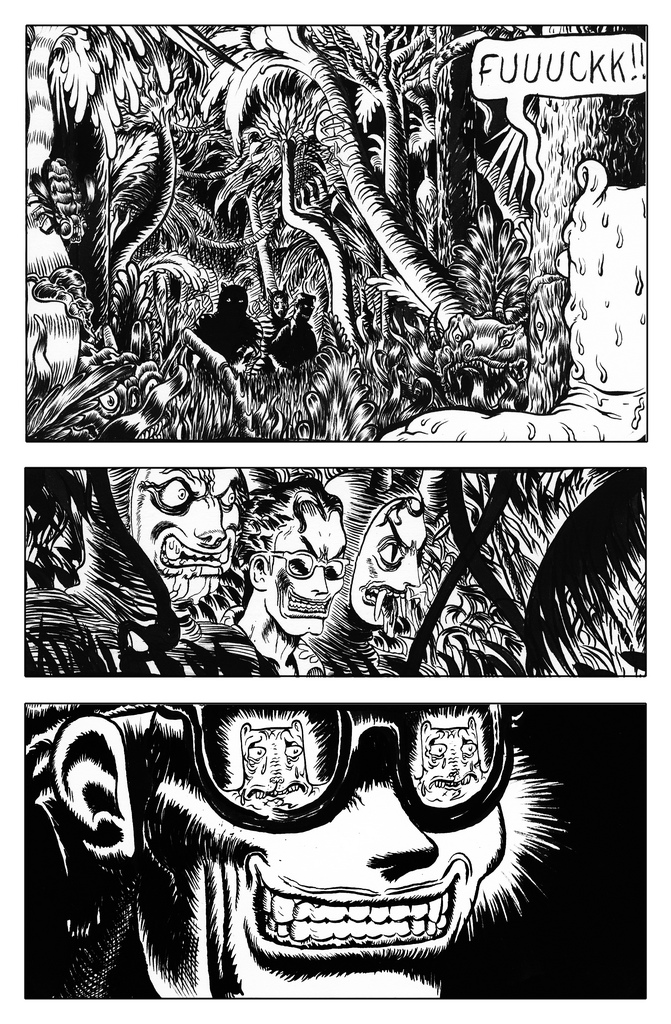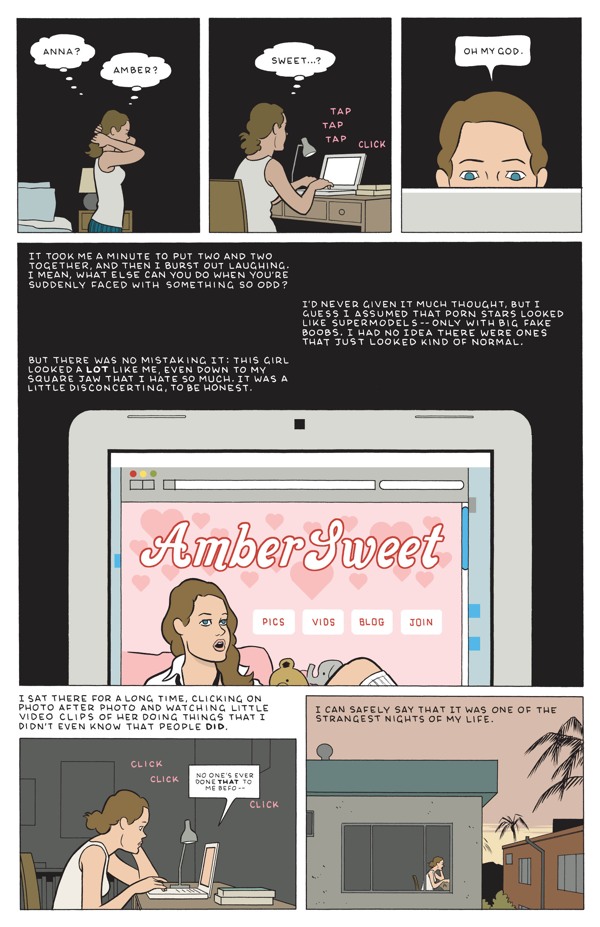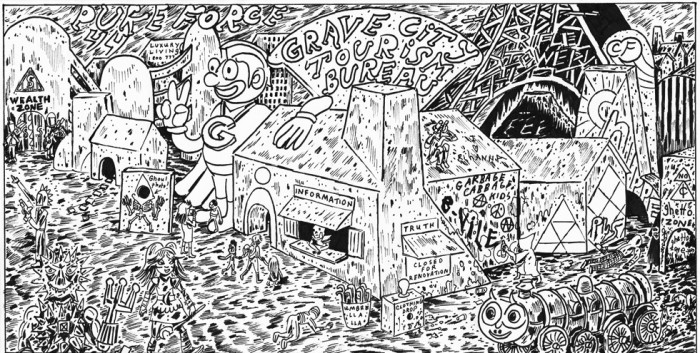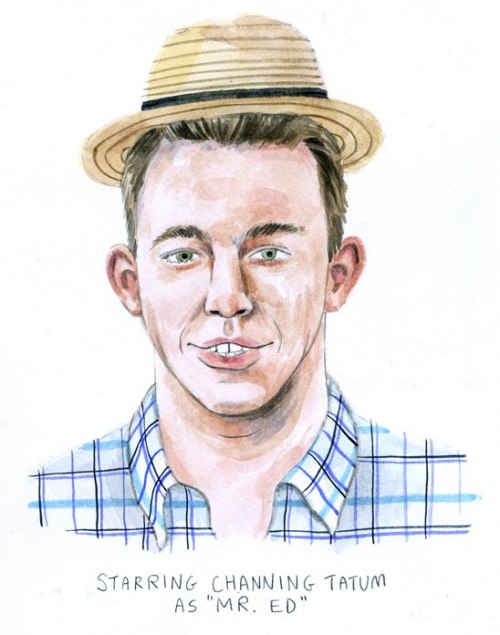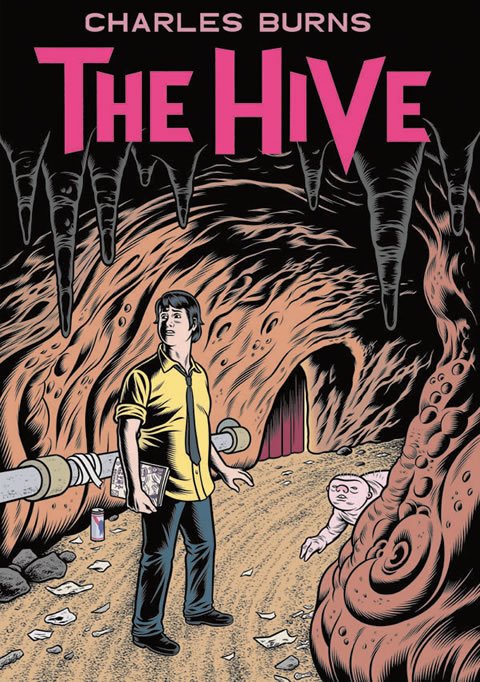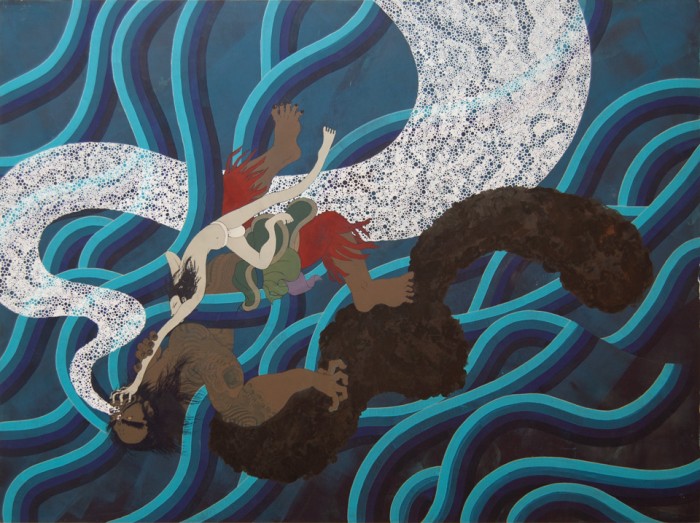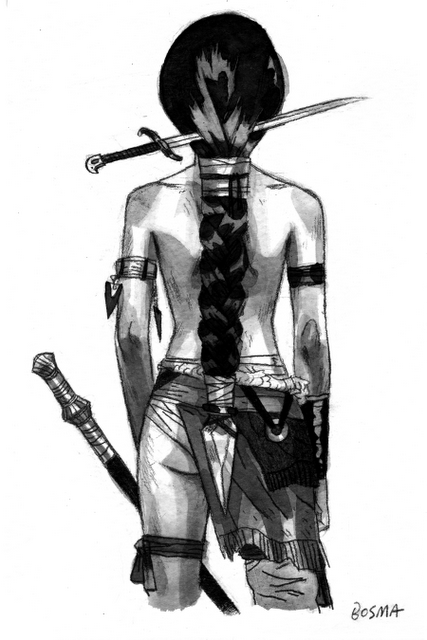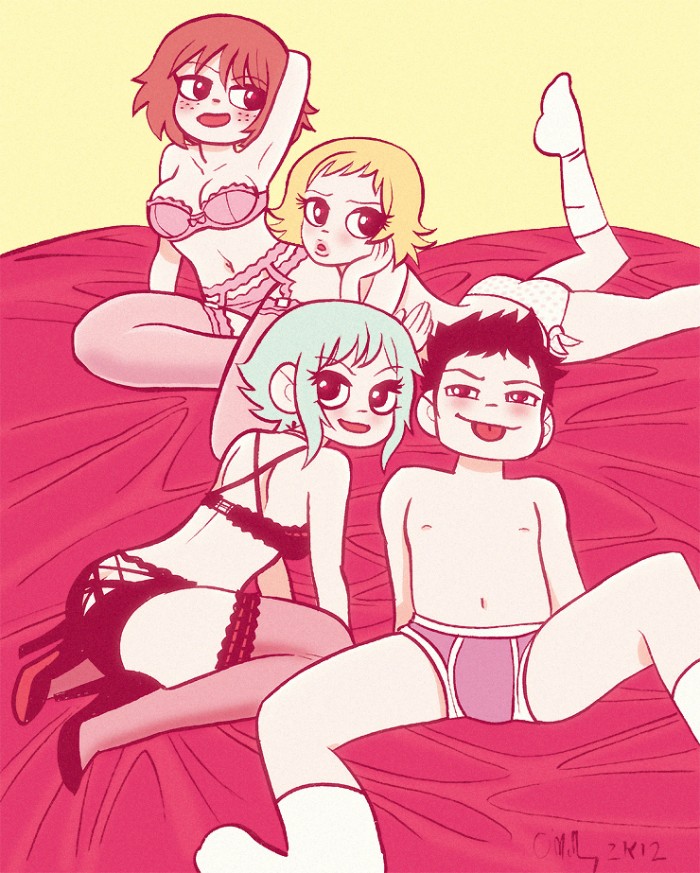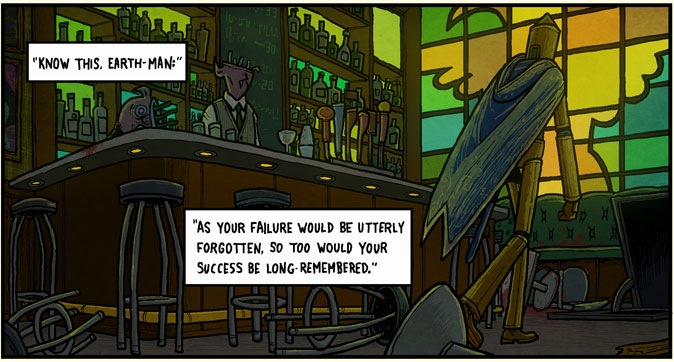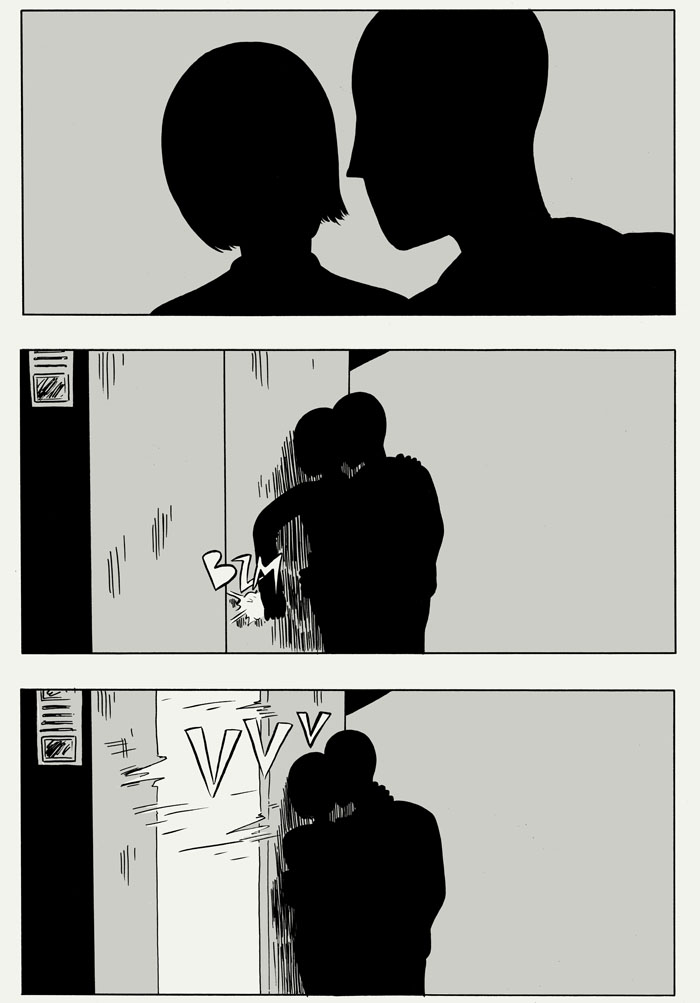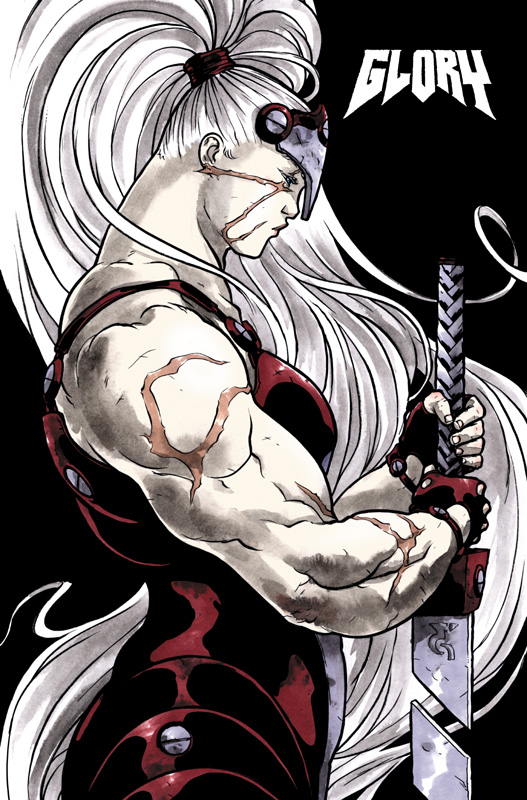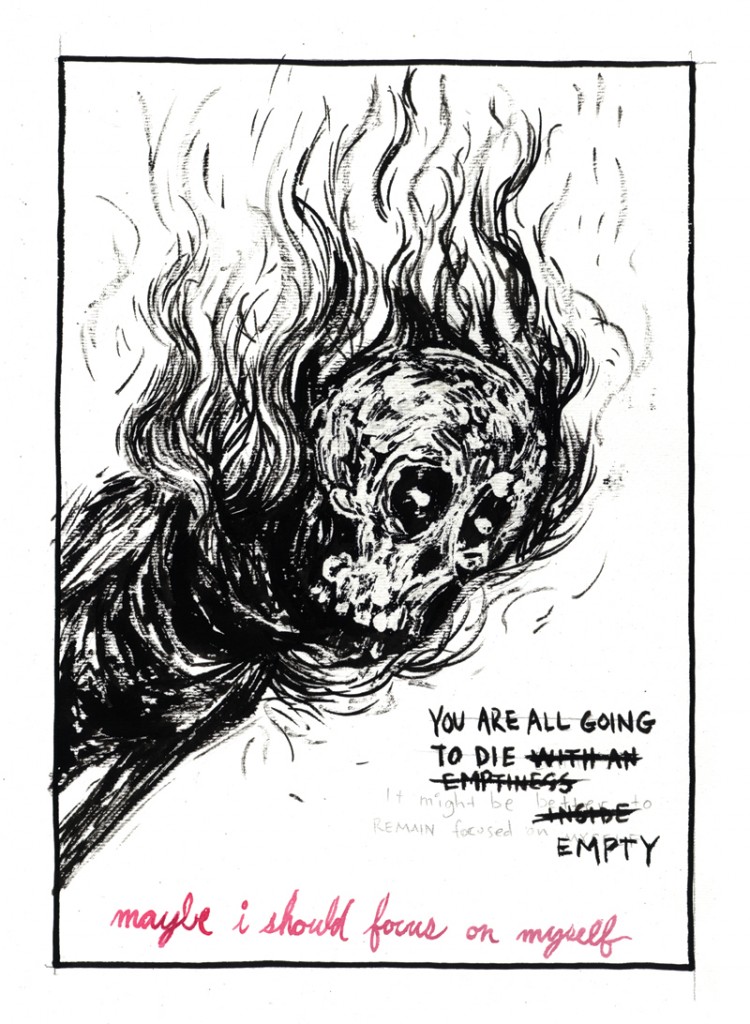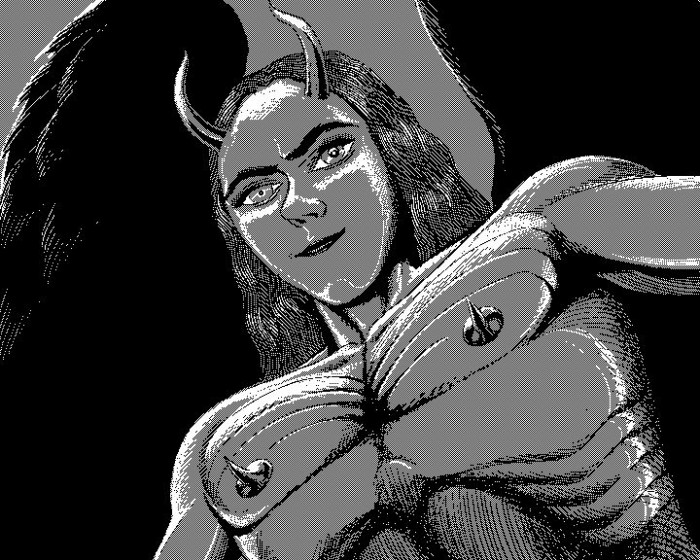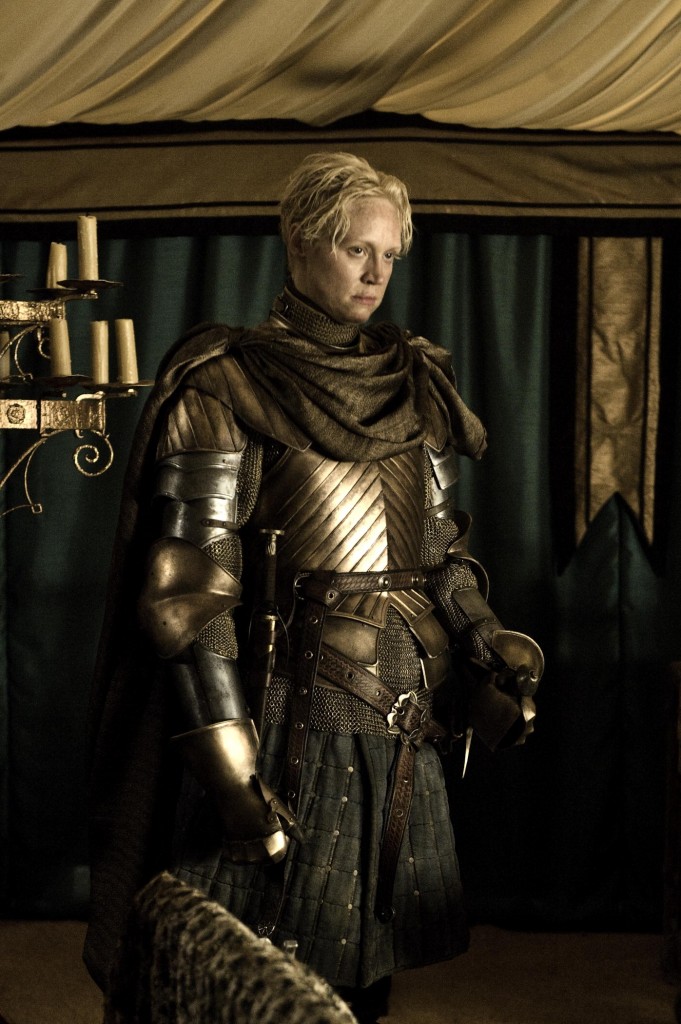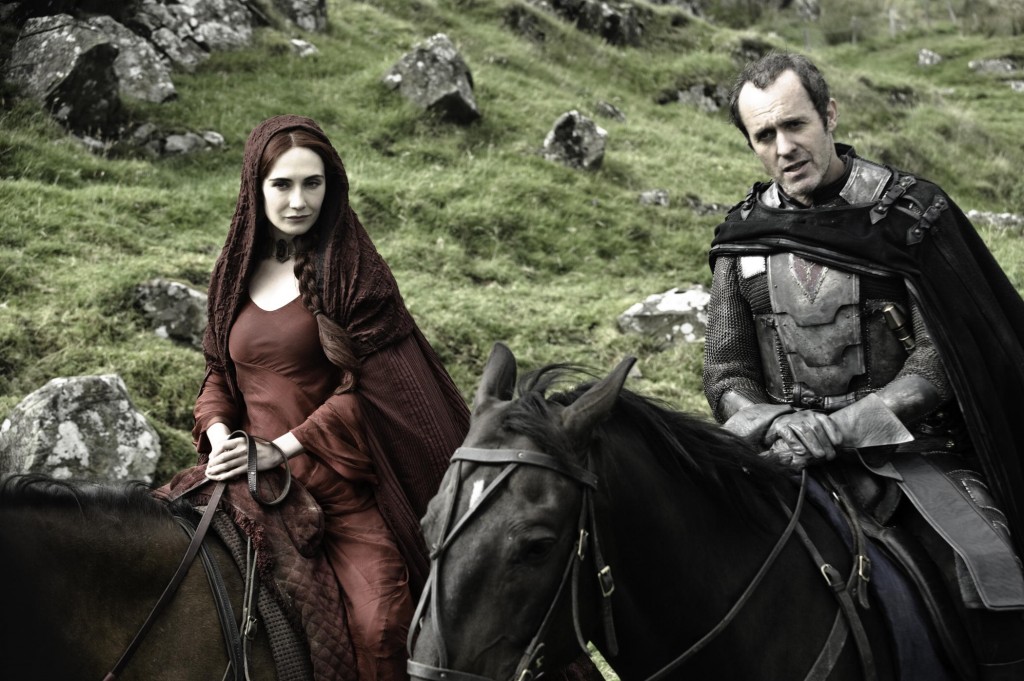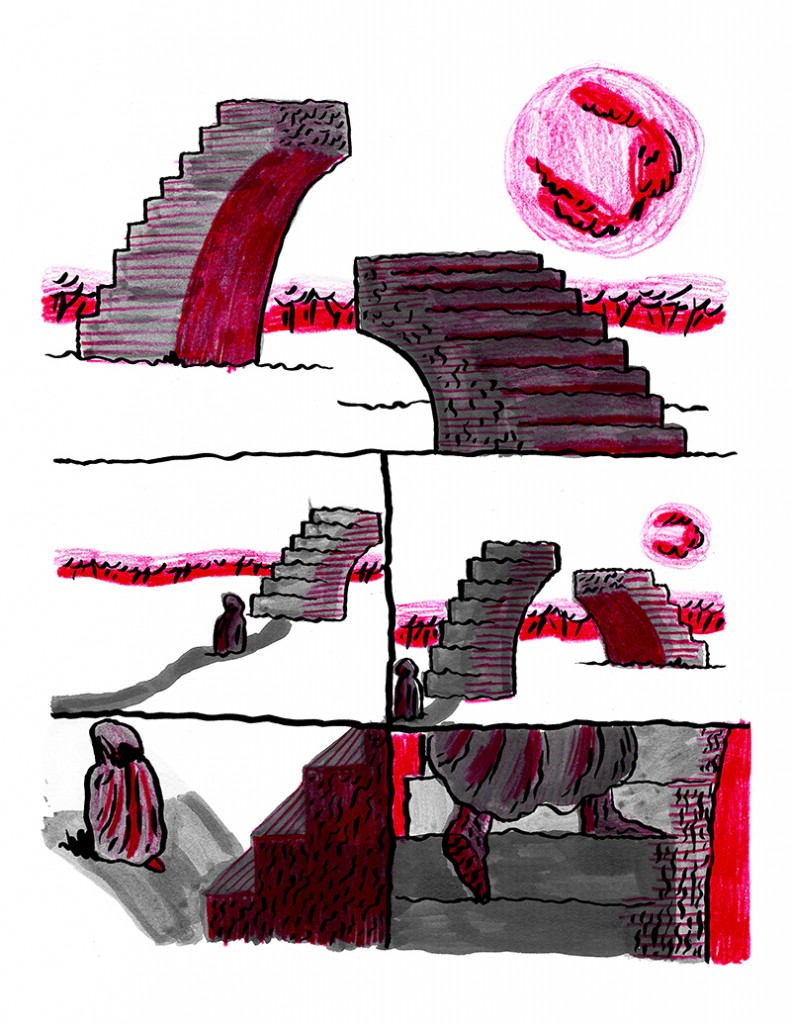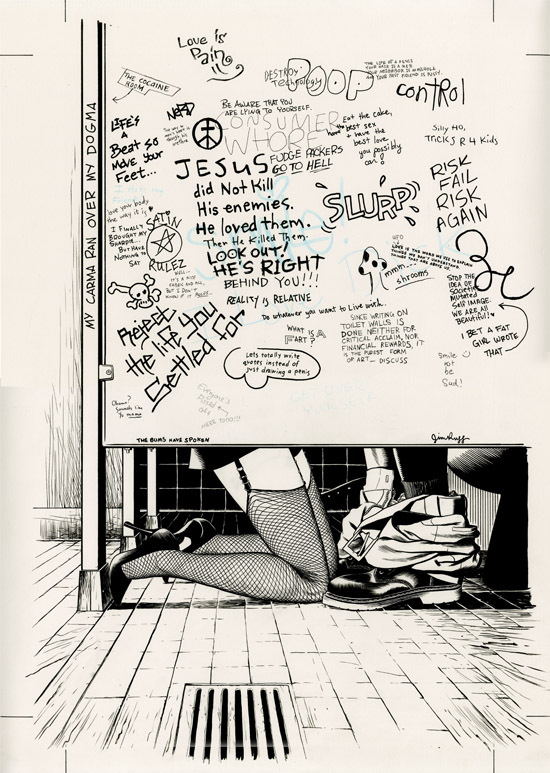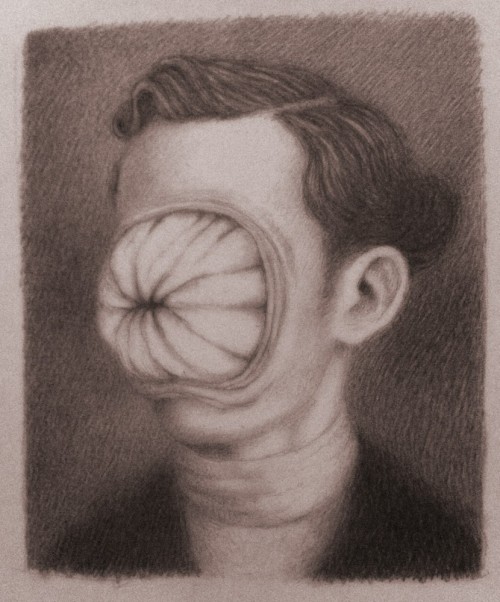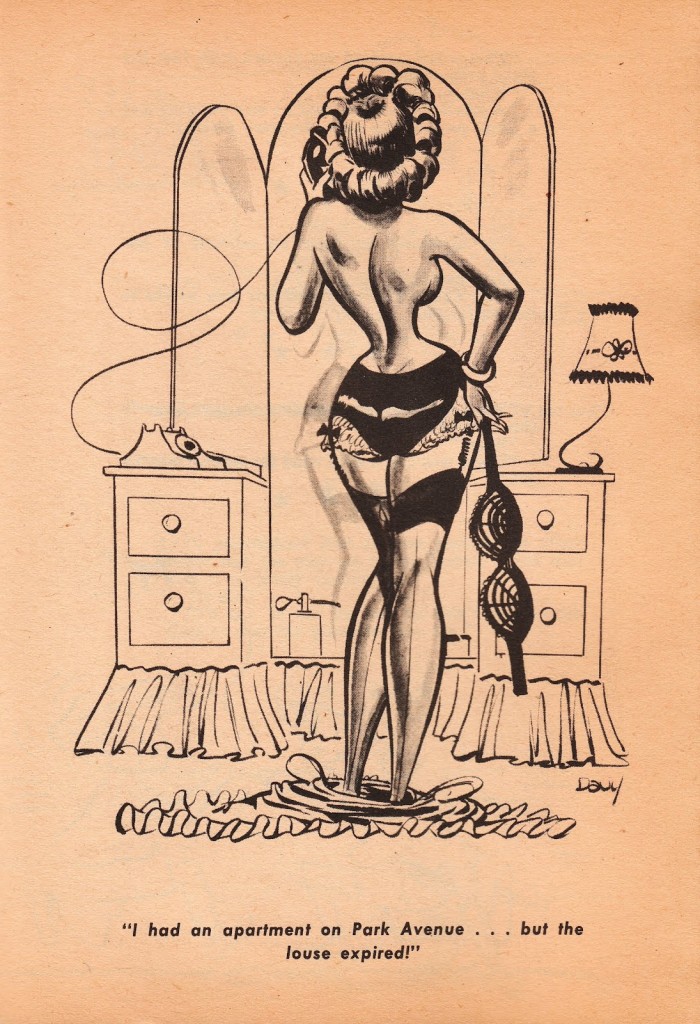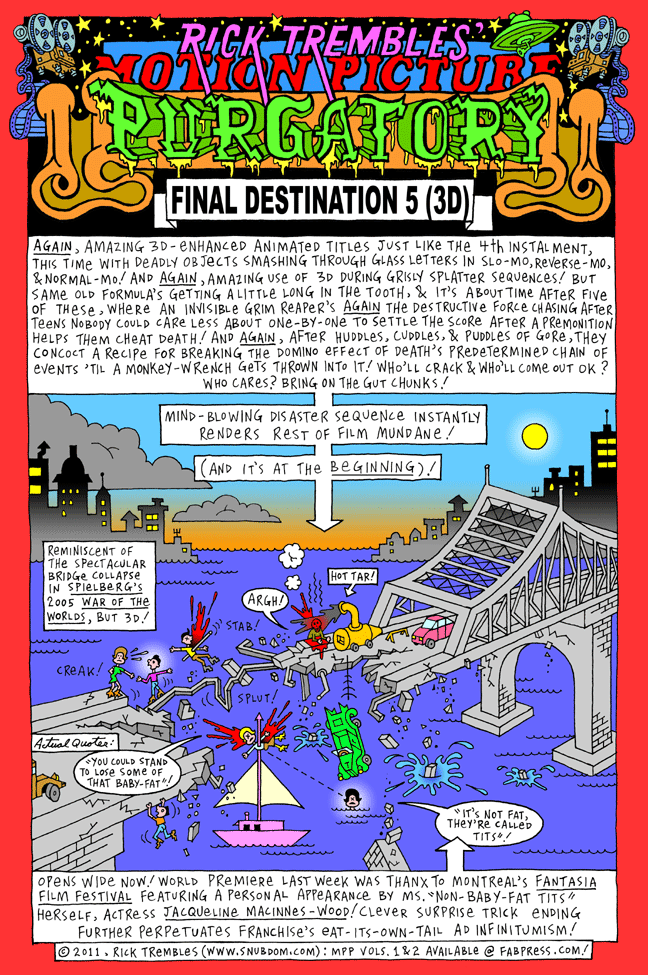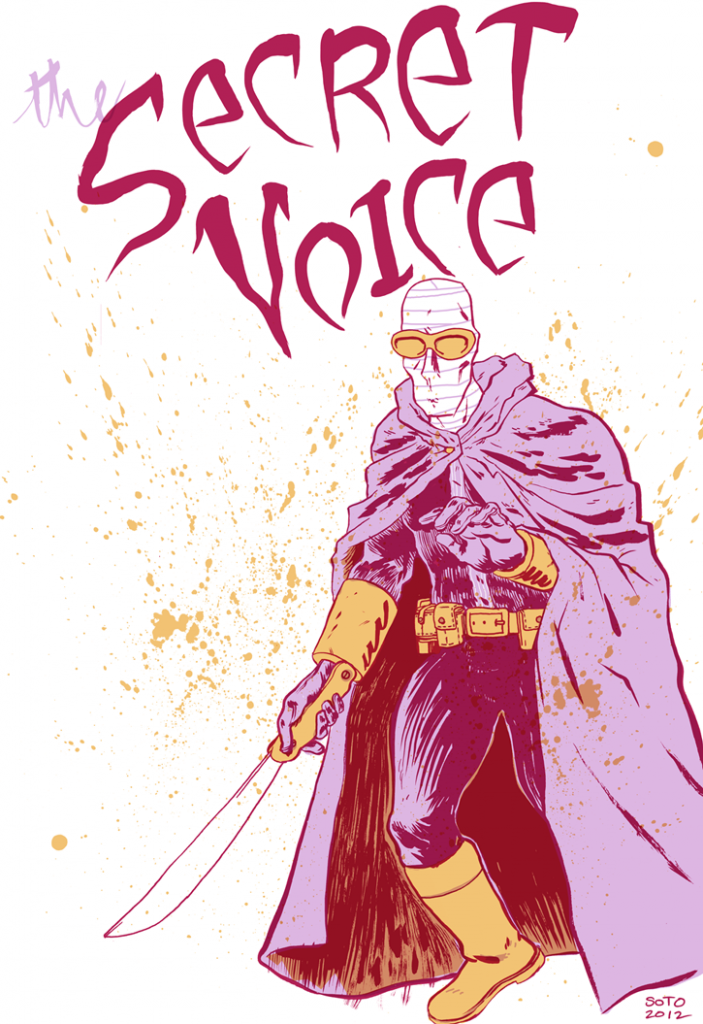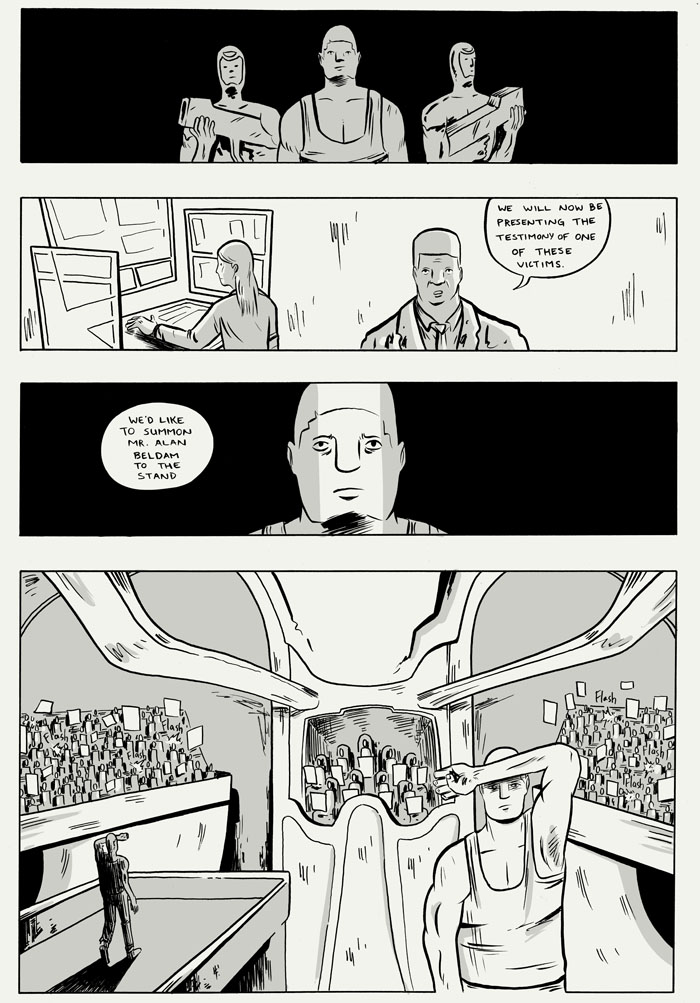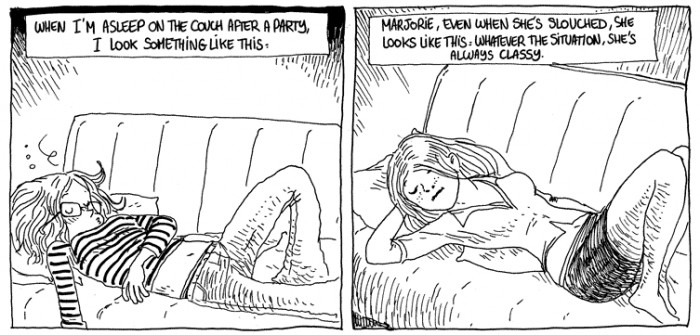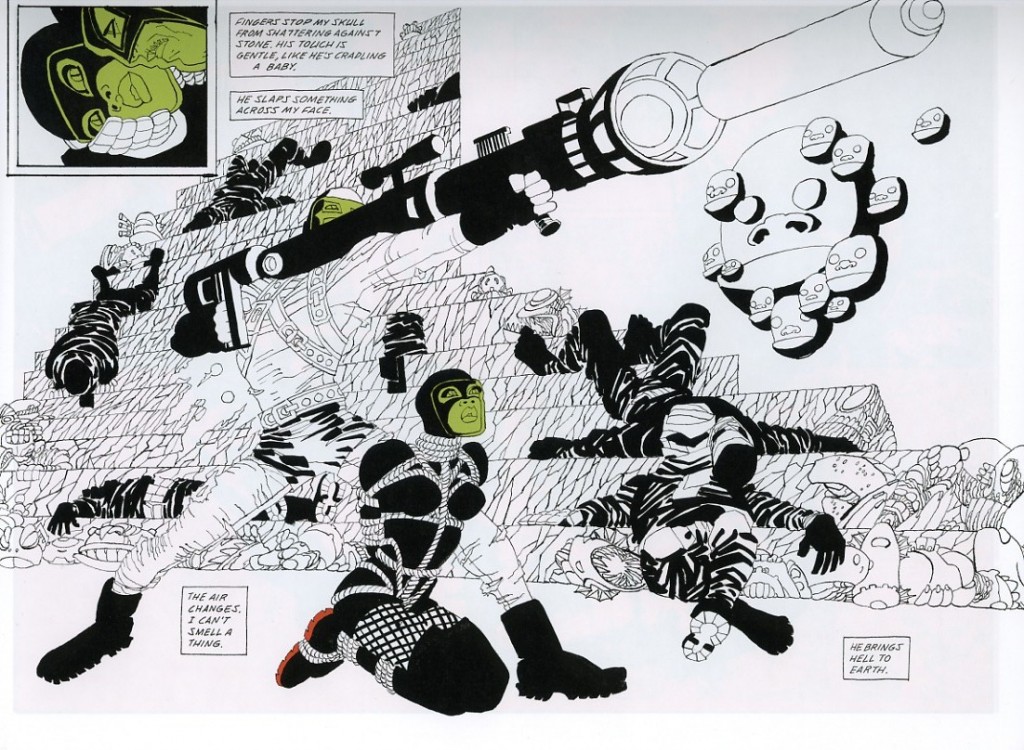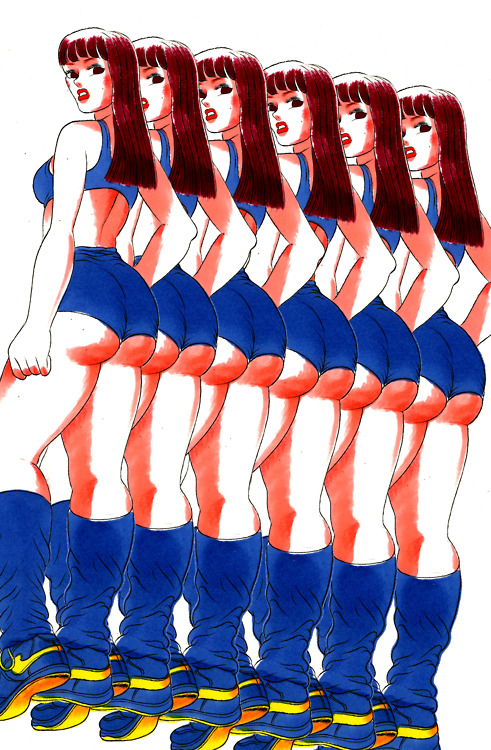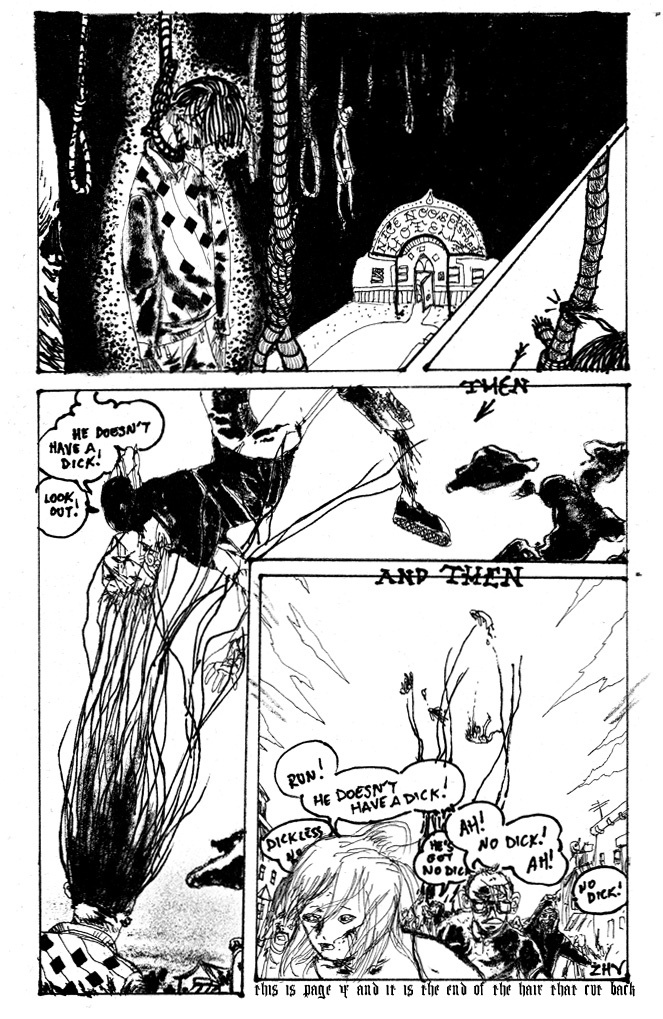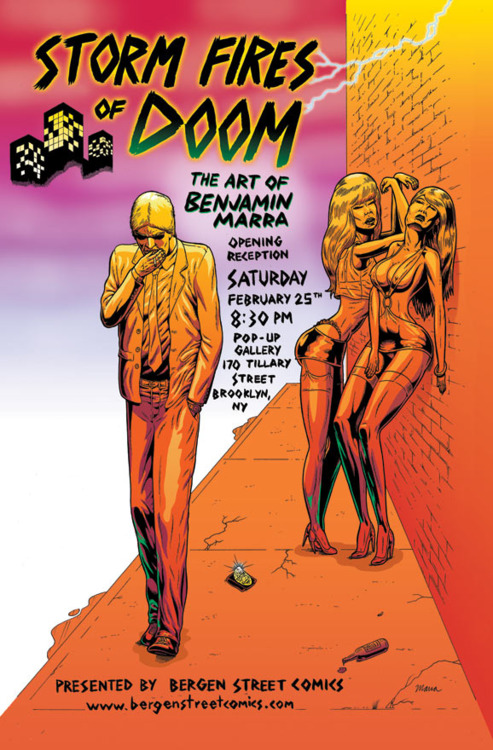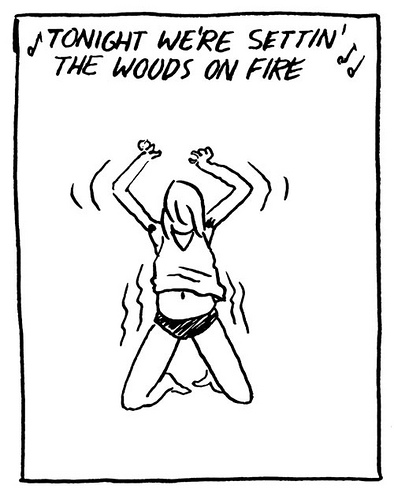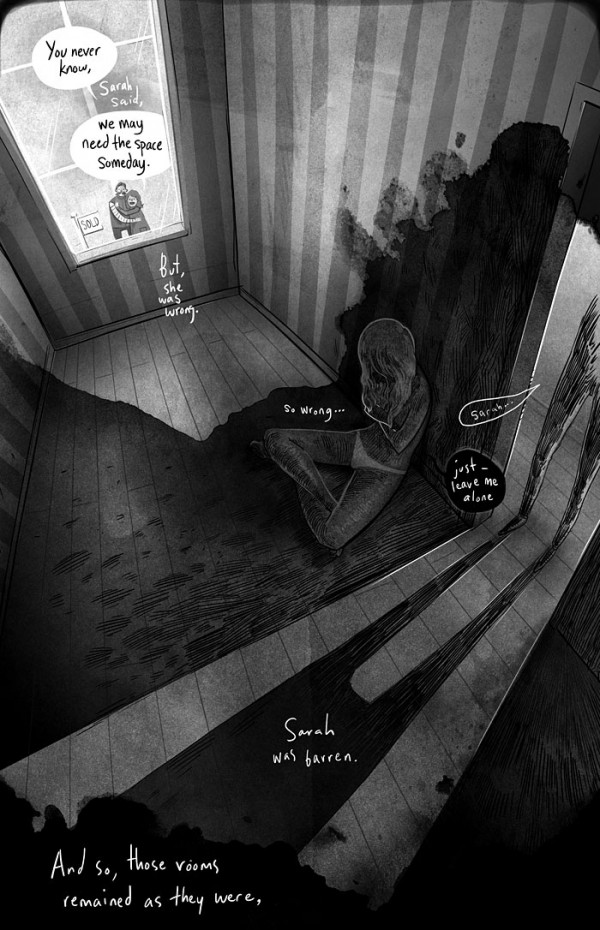Archive for February 29, 2012
Eric Whitacre – “When David Heard”
February 29, 2012This is a tremendous performance of the saddest, most beautiful song I’ve ever heard, conducted by the composer, Eric Whitacre, and performed an ensemble assembled for the express purpose of singing his songs. It’s a little over 16 minutes long. Please, sit somewhere quiet and listen to the whole thing. It could not be more worth it.
“When David heard that Absalom was slain, he went up into his chamber over the gate and wept, and thus he said: ‘My son, my son, O Absalom my son, would God I had died for thee!'”
Carnival of souls: Tom Spurgeon’s modest proposal, early Kramers Ergot for sale, new Henry & Glenn, Ryan Cecil Smith, Frank Santoro, more
February 28, 2012* Last week Tom Spurgeon made a modest proposal: Any time you talk about one of the major corporate superheroes, mention their creators. I will be doing this from now on.
* Kramers Ergot #1-3 are busting out all over! Last week, a small number of copies of these early, extremely hard to find issues of Sammy Harkham’s no-way-to-describe-it-but-seminal art comics anthology (the less artcomixy ones) went on sale at Secret Headquarters in L.A.; I bought the bundle via the Secret Headquarters web store, where it looks like all three individual issues are still available, believe it or not. This week they’re also on sale on-site at the Beguiling in Toronto. About the only downside to all this is that awkward moment when you’re all excited to read and write about the first three Kramers Ergots and then Joe McCulloch does it first and renders anything you’d say redundant. Read that review, though, seriously — such a pleasure to read Joe combine his recent beat of off-the-beaten-path stuff with his old alternative-comics stomping grounds.
* How the hell did the announcement of the sequel to Henry & Glenn Forever escape my attention??? Well, no longer: Tom Neely has announced Henry & Glenn Forever & Ever, featuring him and the rest of the original Igloo Tornado gang, plus Benjamin Marra, Ed Luce, COOP, and more.
* Tom’s also drawing lovely nudes now and then, it seems.
* Local boy makes good! Closed Caption Comics’ Ryan Cecil Smith is now a part of Jordan Crane’s peerless What Things Do webcomics portal — they’re currently serializing his Kazuo Umezo/Blood Baptism horror-manga tribute minicomic Two Eyes of the Beautiful.
* The Comics Grid’s Kathleen Dunley on Ben Katchor, Julius Knipl, and the memory of cities. I think that if you were forced at gunpoint to make an argument on behalf of the irreducible necessity of the comics form, Katchor’s work would be one of the first things you would reach for.
* Last time we visited Bruce Baugh’s newly resurgent World of Warcraft blogging, he was investigating the possibility of playing the game without dying. Now he’s examining the potential of playing the game without killing. Amazing how these entirely self-imposed rules can totally alter one’s experience, even mindset.
* Eve Tushnet warns against “evil comes from people who have been hurt! Fear the weak, not the powerful!” horror movies. A fascinating framework I’d never before considered.
* I know there are any number of reasons why people do this, but I’m always baffled when the creators of television shows leave those television shows before the shows end. It’s your show! (Via Whitney Matheson.)
* Frank Santoro has discovered that people are wrong on the internet. I imagine him staying up four, five days at a stretch, reblogging and correcting every tumblr post that doesn’t properly credit an artist.
* Speaking of Frank, it’s amazing how clear his imprimatur is on the comics made by students in his comics-making class.
* And still speaking of Frank, I think this post may have been posted and deleted before, but here’s his valuable run-down of all the major formats and dimensions available to comics-makers today.
* I don’t believe I’d ever seen this lovely piece by Jonny Negron, who can and does work in a lot more styles than the one or two that made his name. (Via Lisa Hanawalt’s inspiration tumblr. Oh, right, Lisa Hanawalt has an inspiration tumblr.)
* This is a very pretty bit of Becky Cloonan art.
* Lovely and intriguing work from Jackie Ormes, a Golden Age cartoonist who was an African-American woman.
* Fabulous picture of a young Art Spiegelman and Françoise Mouly from Mouly’s new mostly-New Yorker-cover-themed tumblr. (Via Robot 6.)
* Real Life Horror: You know, when you think about the clearly illegal surveillance of virtually all aspects of Mulsim life in the tri-state area by Michael Bloomberg and Ray Kelly’s NYPD, it’s not as though history isn’t littered with instructive examples of what becomes of a society when its politicians and law-enforcement authorities start to routinely and relentlessly scapegoat and persecute a religious minority for no good reason, and when other politicians and the news media line up to support this, and when the public either doesn’t notice or says “Hey, good job.”
* Here’s the latest trailer for Game of Thrones. Surprise! It looks good. The location shoots in Iceland are added-value city, man.
* Finally:
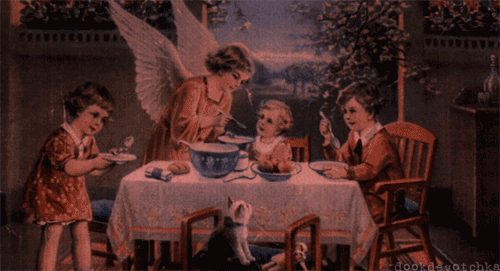
Comics Time: Olympic Games
February 27, 2012Olympic Games
Lando, writer/artist
Decadence Comics, 2012
44 pages
£10 including international shipping (cheaper in the UK)
Buy it from Decadence
I went back and forth about opening this review with “Whoosh, is this thing good,” but the ayes have it: Whoosh, is this thing good. In fact it’s fair to say that I returned to semi-regular reviewing of comics in large part to have an excuse to read this remarkable-looking self-published small-print-run science-fiction adventure and write about it publicly. The unique, tactile packaging helped draw me in: It’s printed on that rough, cheap paper your third-grade handwriting practice workbooks came on, with a weary-looking blue cardstock/construction-paper cover to boot. But the content is just as fascinating, particularly writer/artist/publisher Lando’s ultrathin, ultraprecise line. It looks as though he took the finest-point rollerball pen available and went about painstakingly constructing each laser-toting astronaut, each toga-wearing revenant, and each weathered Greek column and angular laser beam and grain of sand in their eerie retrofuture wasteland by stopping every few millimeters or so, picking up the pen, putting it back down, and starting the line again, just to make sure he got it right. “Scratchy”‘s the word that keeps presenting itself to me, but it’s not the right one at all. There’s a meticulousness to this roughness that scratchy doesn’t cover, and it elevates the SF story, about a pair of visitors from space attacking their enemies — both living and dead — and defending one another as they make their way toward some maguffiny goal in the center of what looks very much like Greek ruins, but for the desert wasteland surrounding them. That particular irony of setting, and the titular reference to the coming spectacle of sport in the artist’s native country, indicate that this could very well be a scathing metaphorical commentary on kill-or-be-killed austerity economics and its beneficiaries. (Indeed, the artist makes that pretty clear on his website, though I’m loathe to lend too much credence to authorial intent.) Personally, I missed the Hunger Games/Running Man bread-and-circuses nature of the action on first read and instead read it as a savage, though savagely thrilling, war comic of sorts. Either way, Lando’s skill with pacing and action choreography is tough to match among people making these kinds of alt-SFF comics today; his perspectival cross-cutting between embattled areas, and his use of blankly linear lasers to traverse that space and shift our viewpoints, is especially exciting. All told it’s the kind of comic where the main shortcomings are best expressed as matters of personal preference — it’s wordless and soundless, while I tend to feel that silent comics make the most sense when the events depicted involve actual silence; it uses irregular panel layouts, while I believe the elegance of a fixed grid would have been quite complementary to the precision of the linework and character/set design. If this kind of thing sounds at all like your bag, and if you’re reading this blog chances are it does, fire up your currency converter and hope he’s got some copies left.
Carnival of souls: SPX Murderers’ Row, more
February 22, 2012* Gilbert Hernandez, Jaime Hernandez, Daniel Clowes, Chris Ware, SPX 2012. Holy shit. That’s…that’s probably the best possible cartoonist line-up of all possible cartoonist line-ups. Can someone get Gloeckner there so I can truly kill myself afterwards?
* After a link like that I feel like a shitheel for directing you toward some doom and gloom, but needs must: Tom Spurgeon’s five reasons to worry about comics, non-piracy edition. I think that a sixth reason that could serve as an umbrella for the other five is the “tough titties” attitude so many people who ostensibly derive enjoyment from comics throw in the direction of those individuals who fall victim to those five problems.
* Ross Campbell on sexiness in his comics. As always it bums me out to see Campbell distancing himself from his very good comics Water Baby and The Abandoned, and even early Wet Moon at this point.
* Kate Beaton dispenses career advice for cartoonists.
* Matt Zoller Seitz and Steven Santos make the argument for adding a new Best Collaborative Performance award to the Oscars to honor performances created by actors, mocap, digital animators, makeup, puppeteers and so on in tandem. As you’d suspect, they were inspired by Andy Seriks, and as far as I’m concerned any such eventual award can just be called the Andy. The resulting essay series has so far championed Jeff Goldblum as Seth Brundle/Brundlefly from David Cronenberg’s The Fly as a proto-example of what they’re seeking to honor. Bonus points to the initial video essay for reminding me that every time I see Gollum falling into the Cracks of Doom, I involuntarily burst into tears.
* BK Munn makes the long-overdue case for a long-overdue comics-creator union.
* That Hans Rickheit short story collection Folly is on its way!
* Bruce Baugh returns to World of Warcraft blogging! And there was much rejoicing. I’d need two hands to count the number of times I’ve thought “Gee, I wish Bruce Baugh was still blogging about World of Warcraft” over the past year or so.
* Bruce also penned a couple of lengthy posts on potential new approaches to zombie horror. I’m partial to the idea of zombies as symbolically resonant with economic attrition as opposed to total societal collapse, myself.
* Grim reading from Anders Nilsen.
* Looks like Michael DeForge went and snuck out another comic book, Incinerator, because why not.
* And he posted a comic strip called “Exams” to Study Group while he was at it.
* Real Life Horror: The ever-more-lawless NYPD has been spying on law-abiding Muslim-American citizens not just in the five boroughs but in colleges and suburbs all around the Northeast, including where I went to school and towns near where I live.
* I don’t think you need to know anything about Robert Wyatt, or any of the music he’s talking about, to get a lot out of Ryan Dombal’s wonderful interview with Wyatt about his favorite music throughout his life at Pitchfork.
* This promo video for Game of Thrones season two is basically just a bunch of actors and crew members saying “It’s gonna be great,” but it also contains our best views so far of several key new characters.
* Did I not point out my guest appearance in Puke Force?
Comics Time: Demon God Goblin Heaven
February 22, 2012Demon God Goblin Heaven
Jesse Balmer, Jonny Negron, writers/artists
self-published, 2011
52 pages
$10
Read a preview at Jesse Balmer’s website
Watch a preview video on YouTube
Buy it from Secret Headquarters
This seamless collaboration between ADDXSTC 2011 Top Tenner Jonny Negron and his Chameleon co-editor Jesse Balmer mines a whole lot of gold from one simple plot vein: the reversal. Every time you get a handle on who’s the biggest shitheel or badass in the book, someone comes along to flip that on its head. Protagonist Charles of Charleston (Balmer’s signature character) is Patient Zero for this technique. The four-page preview sequence linked above was my first exposure to the book, and in the events it depicts the dividing line between victim and victimizer seemed almost painfully clear: Balmer’s goggle-eyed, fleshy, flabby, furrowed, nude, cat-like Charles — a character that seemingly sprung fully formed from the head of one of those grotesque John Kricfalusi close-ups of a smiling or grimacing Stimpy — was undoubtedly at the mercy of Negron’s leering, Wayfarer-sporting, brylcreem-coiffed, switchblade-toting antagonist and his thugs. (Thugs wearing old-timey one-piece swimming costumes and Balinese masks, no less.) But reading the comic itself reveals that Charles was the victimizer up until this point, a rampaging id that consumed or assaulted nearly everyone or everything in his path, including himself, until fate intervened in the form of larger, tougher hombres. The reversal gives the story juice, and reveals a versatility in Charles’ character design to boot: What seems vulnerable and tender in one set of circumstances comes across as priapistic and grotesque in another. The shades-sporting creep, as it turns out, is merely avenging the Casper-like ghost surfer Charles assaulted after washing up on a nearby beach, and is in turn outgunned and outclassed by a dog dressed like Solomon Kane and powered like Doctor Strange. Balmer and Negron’s art styles don’t seem like a natural fit beyond their mutual penchant for the grotesque — Negron’s eroticized coldness has little in common with Balmer’s thick vibrating inks — but in this book, a series of memorable characters doing memorable things in a blackly psychedelic environment, they make a happy match, and that yo-yo pacing is key.
Downton Abbey thoughts, Season One
February 21, 2012More even than being good, Downton Abbey is endearing. That’s apparent by the end of the very first episode, when despite having been introduced to approximately forty thousand characters in the space of 90 minutes, I realized I could place names to faces to personalities in nearly every case. It’s apparent at the beginning of episode two, when I reacted to once again hearing John Lunn’s marvelous theme music — a heartrending swirl and swell of emotion of a sort that the show itself isn’t even aiming for — with pavlovian enthusiasm. It’s apparent every time I laugh at one of the Dowager Countess’s understated overstatements like I was watching Holy Grail for the first time. It’s apparent in my forgiving the show for using as its central sex scandal a plot device swiped from The Golden Girls; or for making its one gay character a conniving, gossiping, backstabbing, predatory, vindictive creep, albeit in such a way as to suggest that these traits predominate and would do whether he was gay or not; or for never delving deeper into the hideous and hidebound class system than presenting it as a sort of culture-wide Stockholm syndrome, mutually agreed to by the benevolent dictators of the ruling class and the loyal, stand-up guys and girls in the servants’ quarters, before time and tide and the inevitability of change softly sweep it away, no harm no foul. It’s a show that makes itself easy for you to watch, and to enjoy.
Given how I’ve spent the past few months, that’s good enough for me. The way everyone went on about Downton Abbey, I expected it to be a searing examination of the relationship between the aristocracy and their servants. I was almost (not quite, but almost) relieved that I wasn’t getting, I dunno, The Wire with tonier accents, or Mad Men with even nicer suits. Instead it’s a soap. Not that there’s anything wrong with that! I never miss an episode of The Bold and the Beautiful and The Young and the Restless, so soapiness doesn’t bother me even at its soapy soapiest.
And this wasn’t that, after all. It’s a magnificently shot show, for one thing, with a remarkably firm grip on itself — its fast-paced yet crystal-clear editing rhythm and deft steadicam shots were present from the first minute, no growing pains here. Downton’s richly appointed rooms are almost always shot in such a way as to establish both their presence and the presence of a human being or two within them, not just driving home the perceived indissolubility of that relationship, but suggesting the influence these lavish spaces must have on those who inhabit them day in and day out. And pretty much no matter where you are, indoors or out, you’re looking at something that’s been beautifully lit — the lovely, torchlit country fair scenes couldn’t have looked and felt more likely a nice summer evening with friends if that’s what they actually were, just for example.
It’s a well-cast show, too. I don’t know why I tend to think of ensemble television shows first as a matter of casting rather than acting itself, but I do…I suppose it’s because so much of it comes down to the nature of the actor’s instrument, the way they look and sound, in addition to what’s done with it. Here you need look no further than Maggie Smith as the Dowager Countess. She looks like Large Marge post-wreck, or like some evil anthropomorphized insect; indeed her visual and aural resemblance to Lokar, Potentate of Thug Locusts is uncanny. But beyond the show’s Omar Little figure, you’ve got Carson’s Asterios Polyp profile, or Matthew Crawley’s astonishingly blue eyes, or Lady Sybill’s luscious lips and raspy voice, or Mrs. Padmore’s central-casting cookishness, or Mr. Bates’s stoic half-smile, or Lady Cora’s well-practiced beatific smile, or Lady Mary’s dark eyes that can sparkle with warmth or wit or cruelty depending on the needs of the moment, or the way Lady Edith smiles like someone who’s always vainly hoping to be something more than an also-ran, or Anna’s plain prettiness, and on and on and on.
All these details matter, I think. They’re a big part of what invests you in these lives, since nothing particularly earth-shaking is going on most of the time. They’re what make the behind-closed-doors meetings between Carson and Mrs. Hughes, a butler and a head housekeeper, feel less like middle managament and more like Commander Adama and President Roslin bonding on the Galactica. They made that pretty goofy sex scene between the handsome, horny Turk and mean-girl porcelain princess Lady Mary actually sexy, despite the silliness of it all. I’m pretty sure the hateful visages of Thomas and O’Brien — his smirk, her unsmilingness — are at least as responsible for our antipathy toward them as anything they actually did. (Thomas and O’Brien are the best character work on the whole show, by the way — a masterful depiction of how much worse two bad apples can be for the bunch than just one, how two malcontents or hatemongers can support one another and egg each other on until they become a nexus of poison at the heart of it all; I guarantee you you’ve seen this happen somewhere yourself.) They’re the reason that when Mary and Matthew finally kissed, I started clapping as I sat there watching it on the train. To reach a sum greater than the whole, you need the parts.
Comics Time: Onward Towards Our Noble Deaths
February 20, 2012Onward Towards Our Noble Deaths
Shigeru Mizuki, writer/artist
Drawn and Quarterly, 2011
368 pages
$24.95
Buy it and read a preview from D&Q
Buy it from Amazon.com
Here’s a book with a hugely important message to which I am very sympathetic, which is never less than enjoyable to read or look at, which I nevertheless didn’t get a ton out of, in the end. A fictionalized memoir of Mizuki’s participation in the Japanese military’s ill-fated attempt to repel invading American forces from a South Pacific island, Onward Towards Our Noble Deaths alternates between expressively cartooned vignettes among the troops that show off Mizuki’s incongruously cute, oblong/oval-headed character designs — seriously, it’s like an army of Berts from Sesame Street — with powerful, passionately drawn photorealistic depictions of both the tropical island environment and the carnage it comes to house. Mizkuki’s disgust with the who-gives-a-fuck pointlessness of the men’s mission, and the callousness with which the commanding officers order the men into suicide runs when the mission inevitably fails, is palpable; interestingly, it comes through equally well in the black-comic cartoony material, which depict the forces’ slow attrition through disease, accidents, enemy forces, and even animal attacks, and in the astonishingly proficient hatching of the realistic scenes, wordless depictions of the island and the ocean and the spectral American G.I.s who bring death to them both. But the characters are more or less incidental to the book’s agenda — few of them are developed any more than is necessary to convey the idea that it was a waste to send this or that funny or annoying or brave or totally ordinary guy to his death for no reason — and thus the book can only get the emotional hooks required for that idea to connect into you in the abstract. If you already believe that war is hell, I’m not sure this book will enlighten you further, certainly not the way it did when it was initially released in Japan in the ’70s. But there’s one aspect that stuck out to me beyond the basics: The suicide-charge ethic of the Imperial Army comes across as a bizarre ideology simply grafted on top of an army full of regular guys, who complain and help each other out and badmouth the officers and make dirty jokes same as any other army, banzai or no. And in that sense, it makes you wonder what people half a world and half a century away from us will think of the ideologies that drove us to kill and die, too.
Comics Time: Optic Nerve #12
February 16, 2012Optic Nerve #12
Adrian Tomine, writer/artist
Drawn and Quarterly, 2011
40 pages
$5.95
Buy it from D&Q
Read a preview at Boing Boing
Man, is this thing ever happy to be a comic book.
The format of a comic doesn’t matter to me a whole lot, unless the format in question is notably detrimental to the comic it houses. I like the idea of serial alternative comic book series mostly for the promise of seeing a lot of work from alternative cartoonists on a regular basis, but today that need is met by the web. (Which can’t meet all needs, to be sure — it doesn’t meet the need of retailers to have that kind of material showing up fresh every few months and consequently attracting a different clientele to the shops on Wednesdays, but that’s not my bailiwick.) But in Optic Nerve #12, Adrian Tomine reminded me what can make an alt-comic such an attractive and pleasurable way of packaging material, something not even the most well-stocked RSS reader can provide.
In addition to the usual letters page, its weirdly personal mix of praise and criticism as po-facedly selected as always, the issue consists of three comics. The first, “Hortisculpture,” feels like an homage to the apparently final two issues of the greatest of the alternative comic books, arguably the two best single alternative comic book issues by anyone: Dan Clowes’s Eightball #22 and #23. Like them, the story is constructed from individual self-contained strips, in this case a full “week”‘s worth: six black-and-white four-panel strips plus a full-color “Sunday” page, over and over till the end of the story. Said story recounts a family-man landscaper’s quixotic career detour into the world of contemporary art via his own unique blend of sculpture and horticlture, an unappreciated (arguably unappreciatable) hybrid his pursuit of which upends his life. As a crypto-autobiography it’s a corker — a keyed-up, hyperreal representation of the travails of Tomine’s chosen form of self-imposed artistic marginalization. It’s as engrossing to watch him work his way through as, say, Gabrielle Bell’s similar fictionalizations of her family life. (Plus it allows Tomine’s customary preoccupation with the intersection of race and romance a new, markedly less hostile environment in which to flower.) Things have gone a lot better for the cartoonist than the hortisculptor, to be sure — the former just received some of the best notices of his career for the wide release of the comics he made about his marriage to the mother of his kid, while our last glimpse of the latter is of he and his daughter gleefully smashing his work to smithereens — but the anxieties underlying the worst-case-scenario comic are obviously real, and really funny. And once again like Clowes, in Eightball #22 and later in Wilson, Tomine’s working with a much “cartoonier” style — a curvier line, bulbous noses, dot eyes, doughier physiques — that enjoyably invokes similar work from Sammy Harkham or Chuck Forsman. It feels right, somehow, to look at art like this on a staple-bound page.
Next up is that staple of one-man anthology series, the reprint from some other anthology. In this case it’s Tomine’s “Amber Sweet” from the broadsheet-sized Kramers Ergot 7, attractively scaled down to the size of the floppy comic, its muted color scheme even more clearly centered around the nutmeg-colored hair of the young woman who discovers she’s the spitting image of the titular porn star. “Sweet” is fascinating to me in that it’s about how unsexy sex can be: our protagonist’s love life, and more besides, is basically destroyed by her resemblance to Amber, a resemblance the men in her life are either daunted by or way too into. Tomine’s perhaps uniquely suited to explore this plight: his cartooning is as sexy as it gets, I’ve always found — his line elegant, his compositions enticingly icy, his character designs very attractive, from Amber and her never-named doppelganger on down — but his work relentlessly cuts against that with the awkwardness and selfishness of his characters. Here we see a beautiful girl who looks like another beautiful girl who makes her living by taking her clothes off and having sex have sex herself as drawn by one of alternative comics’ great unsung sensualists, but the story denies us the pleasure on every possible level. It’s a blast to watch Tomine so successfully negotiate that obstacle course on the way to the story’s knockout ending, a beautiful and satisfying opening-up of the story’s emotional claustrophobia.
The third and final strip — two pages, 20-panel grids — is Tomine’s Lament, pretty much, a self-effacing mock-autobiographical strip about Tomine as “The Last Pamphleteer,” his adherence to the alt-comic format earning him the laughter of his peers and the indifference of his audience. And here, perhaps, he’s trying a little too hard. Throwing “tweet” into sneer quotes as if the term is an affectation instead of just, y’know, email or website; saying things like “I even liked it when the artist was obviously just trying to fill a few extra pages, and you’d get a pointless, dashed-off autobio strip or something!”, as if both he and we didn’t notice that he had to cram this thing onto the inside back cover to get it to fit; using D&Q publicist Peggy Burns as an antagonist, as if he weren’t still core Drawn and Quarterly artist Adrian Tomine; setting up Anders Nilsen and Kate Beaton as models for the new book-driven publishing model, as if they too weren’t primarily collecting work they published in smaller chunks elsewhere…He doth protest too much, and while the result is amusing, who needs it? He’s Adrian Tomine. He writes great and draws great and is as good at using his chosen format as anyone else is at using theirs. That’s all you need.
Carnival of souls: Brian Chippendale, Gary Gianni does A Song of Ice and Fire, more
February 15, 2012* Brian Chippendale’s Puke Force returns!
* Wow: Gary Gianni will be doing next year’s A Song of Ice and Fire calendar. That will be very, very attractive fantasy art. Gianni’s the best illustrator of the similarly rough-hewn Robert E. Howard Conan material by a country mile.
* Wow #2: Kraftwerk will be playing each of their albums in their entirety, one album per night, during an eight-night residency at the Museum of Modern Art. I may have to hire a sitter for this.
* Lisa Hanawalt reviews The Vow for Vanity Fair (!).
* Kristy Valenti pens a short panegyric for Frank Miller’s Ronin.
* I hadn’t seen the cover for Charles Burns’s forthcoming The Hive until the Italian about-comics publication Conversazioni Sul Fummeto posted it to their Facebook account. Lookin’ good.
* These four-panel comic strips by CF (!) are great.
* You should by all means go see the Matt Wiegle/Shawn Cheng/John Mejias art show at Franklin Art Works in Minneapolis this weekend.
* This is the first Sam Bosma art I’ve seen that I’d describe as sexy. It’s a good look for him!
* Speaking of sexy, Bryan Lee O’Malley takes us on the express train to Bonertown with this pin-up of his Scott Pilgrim characters Wallace Wells, Kim Pine, Ramona Flowers, and Lisa Miller (whom I had to wiki).
“You will likely find death”
February 14, 2012Page 4 of “Destructor Meets the Cats” has been posted.
You can read the whole story so far on one continuously scrolling page by clicking here.
Carnival of souls: Spurgeon, Kiersh, Campbell, Chippendale, Barker, more
February 13, 2012* Your must-read of Comics’ Grossest Fortnight is Tom Spurgeon on More Watchmen. That’s all I can really say — he says it all himself.
* Dave Kiersh fucking funded his Kickstarter book. Alright, man, alright.
* I quite enjoyed this account of the grotesque legal odyssey of Joe Simon and Jack Kirby and Jerry Siegel and Joe Shuster by Comic Book Comics‘ Fred Van Lente and Ryan Dunlavey.
* Andrew White has posted the truly fabulous concluding pages for Sexbuzz Chapter Six.
* I’ll be checking out the Ross Campbell-illustrated Rob Liefeld revival title Glory this week, for sure.
* Brian Chippendale’s Puke Force returns tomorrow! You are not prepared.
* Please go download Vito Delante and Rachel Friere’s genuinely delightful FCHS Vol. 1 for five bucks from Graphic.ly, if that’s the sort of thing you’re wont to do.
* Gabrielle Bell made a poster for Richard Linklater’s Slacker for Cinefamily. Then someone made a video out of it, set to a song by Oneohtrix Point Never, because why not. I’ll never forget how excited I was when I first saw that movie and the one guy said the words “psychic TV” in it.
austin, tx from Tony Groutsis on Vimeo.
* The great Tom Neely is doing a series of his weird one-panel non-gag cartoons for Zack Soto’s Study Group webcomics portal. This is great news, as these seem to be getting better and better as Tom goes.
* I think most all of it has been bought by now, but if you hurry you can buy some original art pages from Brandon Graham and James Stokoe to benefit Ghost Rider creator Gary Friedrich in his legally mandated time of woe.
* It’s been a while, but it looks like Uno Moralez is resurfacing.
* As with Michael DeForge, at a certain point it feels cheap of me to keep posting illustrations from Renee French. Shouldn’t you be willing to click on a French link sight unseen? I think you should.
* Finally, I should note that Clive Barker slipped into a coma and almost died recently due to toxic shock syndrome brought on by a trip to the dentist. Fortunately, he’s on the mend now. Clive is one of my favorite human beings — one of the best human beings — I’ve ever known. Get better, Clive.
Breaking Bad thoughts index
February 13, 2012Here are links to all my Breaking Bad posts. I’ve added the special features I’ve written for Rolling Stone to the list chronologically, so that once you’ve read the preceding review post, it’s safe to read that feature as well. I hope you enjoy them!
* Season One
* Season Two, Episodes 1-3
* Season Two, Episodes 4-6
* Season Two, Episodes 7-12
* Season Two, Episode 13
* Season Three, Episodes 1-3
* Season Three, Episodes 4-7
* Season Three, Episodes 8-13
* Season Four, Episodes 1-6
* Season Four, Episodes 7-10
* Season Four, Episode 11
* Season Four, Episodes 12-13
* Season Five, Episode 1: “Live Free or Die”
* Season Five, Episode 2: “Madrigal”
* Season Five, Episode 3: “Hazard Pay”
* Q&A: Anna Gunn
* Season Five, Episode 4: “Fifty-One”
* Q&A: Laura Fraser
* Season Five, Episode 5: “Dead Freight”
* Q&A: Dean Norris
* Season Five, Episode 6: “Buyout”
* Q&A: Jesse Plemons
* Season Five, Episode 7: “Say My Name”
* Season Five, Episode 8: “Gliding Over All”
* Walter White’s 10 Lowest Lows
* Breaking Bad’s 10 Most Memorable Murders
* Season Five, Episode 9: “Blood Money”
* Q&A: Dean Norris
* Season Five, Episode 10: “Buried”
* Q&A: Betsy Brandt
* Season Five, Episode 11: “Confessions”
* Q&A: Bob Odenkirk
* Season Five, Episode 12: “Rabid Dog”
* Q&A: Steven Michael Quezada
* Season Five, Episode 13: “To’hajiilee”
* Q&A: Lavell Crawford
* Season Five, Episode 14: “Ozymandias”
* Q&A: R.J. Mitte
* Season Five, Episode 15: “Granite State”
* “Granite State” bonus thoughts
* Season Five, Episode 16: “Felina”
* “Felina” bonus: Bloggingheads.tv discussion with Alyssa Rosenberg
Breaking Bad thoughts: the end of Season Four
February 13, 2012* I finished Season Four and am all caught up with the show. LOTS AND LOTS OF SPOILERS BELOW.
* All I know is I’m glad I never googled “Gus gif” for any reason prior to finishing this season. (I just want to note that that final episode was called “Face Off.” Rimshot!)
* I’ll admit it: When that drug dog (hilariously!) popped out of Steve Gomez’s partner’s SUV at the laundry when they went to check it out in deference to Hank’s hunch, I was positive he had ’em. I didn’t count on Gus, Walt, and Jesse’s prideful fastidiousness, however. Then again, I also didn’t count on Hank’s after-the-fact deductive genius. Goddammit, the guy found probably the one tell-tale detail in all the photos Gomie took, the extra electricity running into the laundry. He had ’em dead to rights! One day he’ll get his reward, I hope…though I suspect that the final season will be Walt vs. Hank to the death. That seems like the only way it can go.
* I wish the brief scene between Skyler and Hank when she was checking to see if he’d spotted anything unusual in Gomie’s photos wasn’t brief. Have those two ever been one on one before in the whole history of the show?
* Jesse’s race to get the information about ricin to Andrea in time to save Brock’s life was the most “gasping/squirming/covering my gaping mouth with my hand on the train”-worthy moment the show’s served up in a long time, and as I seem to always be saying, that’s saying something. Heartpounding.
* The whole bomb sequence with Walt and Gus in the hospital parking lot — heartpounding as well. Not that I wanted Walt to blow Gus up, mind you! Gus’s conversation with Jesse in the hospital chapel — expressing ignorance as to how Brock could have been poisoned, backing down and giving Jesse a full week off to deal with his young friend’s medical crisis — made it pretty clear to me that Gus wasn’t involved in Brock’s poisoning after all, though at that point I hadn’t sussed out who was. It just didn’t square with the man’s respectful and trusting treatment of Jesse all throughout their Mexican odyssey, either. So no, I didn’t want Walt to blow him up. But nor did I want him to spot Walt on the roof across the way, which a single telltale gleam from his glasses or binoculars or (I thought the poetry would be fitting here) his bald head would have ensured. In the end, you just can’t root for the death of your protagonist. Or, y’know, so I thought.
* Anyway. I sure enjoyed my little private eureka moment when I realized that if you can ring a bell, you can press a button on a detonator, too.
* I enjoyed the cameo from Peggy Olsen’s mom as well.
* And I enjoyed our brief glimpses of the old, funnier, in-over-his-head Walt — the Walt who’d look like he was about to threaten or even attack Saul’s put-upon receptionist, only to pause and finally say “…I’ll be right back.”
* But then Jesse said “Lilly of the Valley—it’s some kind of flower,” and I wrote, in all caps, just like this:
OH
MY
GOD
WALT
POISONED
BROCK
I’ve done some googling since finishing the season, and discovered that the plot Walt related to Jesse in the second-to-last episode, the (bogus, as we come to find out) idea that Gus poisoned Brock knowing Jesse would blame Walt and kill him for it, was poorly received by many in the audience. They thought that required way too many coincidences, way too many instances of things going exactly the one way they had to go for it all to work, for a man like Gus to feel comfortable relying on. And of course, they were right. (This guy in particular, who figured out what was going on even before the finale made it clear, which is pretty amazing.) This wasn’t some master plan by Walt, it was a last-ditch plan by Walt. Like stripping naked in a supermarket, it was the only thing he could think of that could possibly save his hide. And it was so crazy it just might work. And it did! The horrible, horrible man won.
* I call him horrible despite my belief that however it was that he administered the poison to Brock, he did so in a way he knew would ultimately not kill him. It’s still horrible to inflict suffering on a child, and his family, whose suffering and fear is just as real as Walt and his family’s.
* But mostly, I call him horrible because I now realize why he spat Gus’s offer of clemency back in his face in the desert. Walt himself may not have even truly realized it. Perhaps not until he cracked in that crawlspace, letting forth an insane man’s peals of laughter, did Walt himself realize it. He has to protect his family, yes. But he has to win while doing it. Walter White has to be the smartest guy in the room at all times. Even more than wanting to remove the threat Gus posed to himself and his family (and Jesse — I do think he still would prefer Jesse not be killed, or he’d have killed him when they destroyed the lab) once and for all, I think it was wanting to beat Gus that drove Walt to do what he did. Not for Jesse, not for his family, but for him. That makes Walt worse than Gus. Gus’s hatred of the cartel and his desire to defeat them was born from the love he felt for his friend that they killed. Walt’s desire to kill Gus, to put himself and everyone he nominally cares about in harm’s way if that was the only way to do it, was born from Walt’s love for himself. That’s what makes him so easy to hate, now.
* More google treasure: Creator Vince Gilligan says part of the impetus behind doing Breaking Bad was doing a show where the protagonist slowly became the antagonist. Explains a lot. (That link comes via this Chuck Klosterman/Grantland piece, and you probably have feelings about that sort of thing, but note that Klosterman also sums up the ultimate limitation of The Wire (a show of politics rather than philosophy) as well as anyone I’ve ever read.)
* So what happens next season? Walt and Jesse have no real antagonist at the moment. Oh, I’m sure they can stumble their way into a new one in pretty short order — the whole history of the show, from the pilot onward, is the story of Walt and Jesse making life-or-death enemies at the drop of a hat. But the deaths of Gus, Tyrus, Hector Salamanca, and the entire leadership class of the cartel leave a massive, massive vacuum. I assume Gus’s mysterious past as some kind of untouchable big shot in Chile will play a role. I assume Mike will play a role. The great critic Matthew Zoller Seitz (whose reviews of shows like these I look forward to reading after I finish a series almost as much as I look forward to the actual act of finishing the series) points out that the mysterious German conglomerate that bankrolled the laundry and the air filtration system (I couldn’t help but notice some kind of HVAC was involved in the “guy who can disappear you and your family” service Saul tried to connect Walt with) will likely play a role, too. Seitz also notes that there’s a laptop full of surveillance footage sitting in Gus’s office at Los Pollos Hermanos, just waiting to be decrypted. We’re not done hearing about the death of Ted Beneke either, I’m sure. Saul and his goons could crack about that, or about their involvement in Walt’s poisoning of Brock. As I said, I think Hank will be the Final Boss. And in the end, there’s Walt vs. Jesse, which is just another way of saying Walt vs. Walt.
The Boiled Leather Audio Hour vs. The Winds of Winter
February 13, 2012My latest A Song of Ice and Fire podcast is up, focusing on the sample chapter from The Winds of Winter that George R.R. Martin posted to his website a few weeks ago. My co-host Stefan Sasse and I are once again joined by the illustrious Amin of A Podcast of Ice and Fire. Go have a listen!
Carnival of souls: Brienne, Melisandre, Stannis, DeForge, Bell, Goldfrapp, Friedrich, more
February 10, 2012* The new Game of Thrones characters look fucking great, if you’ll pardon my Tyroshi. I’m giving you the ones you really want to see below; many more publicity stills of faces new and old at the link.
* Wow. Michael DeForge’s Rescue Pet is astonishingly troubling.
* “Cartoonist Chris Ware on why other cartoonists fear Clowes”
* Gabrielle Bell is serializing her Kramers Ergot 8 contribution “Cody” on her website. I’m not clipping anything from it — you need to read the whole thing as it unfolds.
* Check out the comic Mark P. Hensel/William Cardini made for Frank Santoro’s comics correspondence course, Moon Queen. You can really see Frank’s fingerprints on this.
* Young altcomix journo of the moment Ao Meng interviews French altcomix maker of the moment Boulet.
* I’m only running the black-and-white version of Jim Rugg’s Sleazy Slice #5 cover here, because the full-color version is a must-see and his site deserves your traffic for showing it to you.
* Nice art by Renee French, and by nice I mean not nice at all.
* I found these early Dave Berg pin-up gag comics pretty sexy. (Via Tom Spurgeon, from whom I got the Rick Trembles link I posted earlier, too.)
* Saving this for later: Rob Clough’s massive TCJ interview with 1-800-MICE cartoonist Matthew Thurber. I think I’ll read this and the Dan Nadel/Marc Bell monstrosity from a while back back-to-back.
* Matthew Perpetua makes the case for Goldfrapp, the most underrated band of the past decade.
* Real Life Horror: A majority of self-described liberals love President Obama’s army of flying killer robots. A majority of self-described liberals are assholes.
* I don’t pretend to understand George Lucas.
* Finally, one last way to feel a little better about your involvement in comics: Donate to Steve Niles’s fundraiser page for Ghost Rider creator Gary Friedrich to help defray the $17,000 judgment against him on Marvel’s behalf.
Two ways to feel better about your involvement in comics again
February 10, 2012We’re now reaching what I sincerely hope is the end of Comics’ Grossest Fortnight, two weeks full of disgraceful behavior by the industry’s major publishers Marvel and DC and dire news for creator rights and ownership. (See here, here, here, here, here, here, and here.) If you want to feel better about being a reader of or active participant in an industry that routinely abuses the writers and artists responsible for the existence of that industry in the first place, I think I can point you in the direction of two ways to do that.
First, the great cartoonist Rick Trembles needs help. Trembles is the man behind Motion Picture Purgatory, unique movie rant/reviews that combine all-caps praise and/or damnation with weirdly detailed cartoon depictions of scenes from the movie (His take on Transformers 3 is a recent fave of mine.) Trembles was forced out of his long-time apartment by his landlord under suspicious circumstances, and the subsequent costs of moving and storing his stuff with next-to-no-notice have left him destitute and in need of work. If you’ve got freelance illustration work you can throw his way, or (according to him) more importantly if you’re a Montreal resident and can offer him full-time work, do it by contact him via the above link. (You can even donate directly to him via PayPal, though he says he prefers work, naturally.)
Second, with just three days to go, Dave Kiersh’s Kickstarter for his graphic novel Afterschool Special is in grave danger of going unfunded. Kiersh is one of my favorite cartoonists, and pound for pound and panel for panel, I think he’s the most underrated alternative comics creator in North America. If you’ve ever enjoyed a single note played by M83, for example, I think you’ll go nuts for his curvy cartooning of life in the ’80s/’90s teenage wasteland. A donation of $20 gets you the book when it comes out; a donation of $35 gets you the book and his previous collection as well. You can’t miss.
These are cartoonists who live and die by their own work, pursuing their own aesthetic and their own obsessions. Support them. They deserve it.
Breaking Bad thoughts: Season Four, Episode 11
February 9, 2012SPOILERS AHEAD.
* I had to write about this one right away. I had to.
* Yep, I’m still genuinely touched by Jesse’s newfound affection for Mike, and vice versa. I’m a sucker for people getting along, what can I say.
* And once again, Gus trusts Jesse enough to walk with him for six miles in the middle of nowhere while in a wounded state. That the show didn’t even bother showing us their long stroll together, the way they’ve done with Walt and Jesse in the past, tells us we can trust that trust.
* Tyrus has both the name and the sinister dandy look of an ’80s urban-apocalypse villain. “Does the laundry have to be dirty?” “…nope.” Nice to see a flash of personality from him, too.
* Sic semper Ted Beneke. It’s funny — I thought the little bit of business of Ted tripping over his rug on the way to answer the door earlier in the episode was accidental, that the actor then improvised and the moment was kept in by the filmmakers. Nope! Running away from a sloppy career-criminal abduction/assassination attempt and killing yourself in the process is Breaking Bad at its most Coen/Lynch, which is saying something.
* I’ve read enough Digby to know that tasers are less an law-enforcement alternative to lethal force and more a law-enforcement alternative to using no force, or more specifically to taking any guff. So I was quite pleased to see Tyrus’s use of a cattle prod on Walt — not a taser, but functionally indistinguishable from one in its narrative impact — not played for laughs in the slightest. That looked fucking awful. And he kept on using it even after Walt was down. This was about punishment.
* Christ, what a gorgeous shot composition, of Walt on his knees with a black bag over his head as Tyrus and company stand guard while Gus drives up. Watching the sun come in and out of clouds, their shadows on the desert…just lovely. Getting back into the mythic-weird territory of the plane crash.
* That desert scene was astounding in that just when you think you’ve plumbed the depths of your own disbelief and disgust where Walt is concerned, he takes you even further. He was out. He was free. Gus gave him a chance to leave the business with his life, and by doing so, he couldn’t help but show Walt that he couldn’t kill him. Walt figured this out, figured out that whatever their problems with one another, Jesse was still preventing Gus from killing him, and likely always would. He could have walked away. And what does he do? He proves himself incapable of not being a dick. He gets in Gus’s face, confronting the man with his own impotence. And thus he ensure that Gus will remain his enemy rather than washing his hands of him, that he’ll work on Jesse’s defenses until Jesse consents to Walt’s murder, that Walt’s family — his children; his baby — are now in the line of fire. He just couldn’t not be a terrible, angry person. And he paid for it.
* The final sequence of this episode…I mean…gosh. Frightening in how soul-curdling it was. Dave Porter’s score returns to pulsing, dissonant, Texas Chain Saw-indebted industrial, as Walt’s supine position in the cobweb-infested, dirty crawlspace, and his mad cackle, make that particular filmic comparison even harder for me to shake. When he first started laughing, I thought he’d figured something out, something that Skyler giving Ted their money enabled him to do that would help them out of their situation. But when I realized that he’d simply…lost it…god damn it. The look of mounting horror, real horror, on Skyler’s face as she looks down on what her husband has become, and realizes what it means? Her woozy walk down the hall as Marie reveals her life is in danger as well over the answering machine? The floating camera tracking upwards from Walt’s ruined face? My goodness. My goodness gracious.
Breaking Bad thoughts: dirty pool edition
February 9, 2012I’ve now seen Season Four episodes 7-10. Close to the end now. SPOILER WARNING
* Ha, remember back in Season Three when I said how much less intimate the show was, and how big the players had gotten? Little did I know! Straight-up Godfather/Scarface-level shit now, from “and Stephen Bauer” in the opening credits on down.
* Which is a development worthy of some study, I think, beyond just “wow, big things popping for the former Gang That Couldn’t Shoot Straight.” But to get there requires some preamble…
* Okay, so during these episodes — even in the first couple of them, when Gus was still largely at the margins, still the invisible man behind the cameras, and when Jesse’s position as Mike’s shadow still seemed much more like a combined act of charity and insurance policy — I realized that all of the major protagonists and antagonists on the show, i.e. the people whose actions truly drive the plot, were quite simply a lot of fun to watch at this point. I found myself really hating that these guys were at odds, that for any one of them to come out on top, one or more of the others would have to go down.
* Let’s start with, for lack of a better term, the good guys. Walt may have been largely coasting on sympathies earned over the past three and a half seasons, but I still didn’t want to see him get busted or killed. (I mean, even putting those sympathies aside, there’s a pleasure to “how’s he gonna get out of this one?”, you know? The Houdini act is fun to watch. Jesse only gets more sympathetic and more charismatic as the show progresses. And Hank is a cross between Sherlock Holmes and (to quote another actor on the show in another movie he was in) that guy from The Incredible Hulk — his detective work gets sharper and sharper, and his panache in presenting it to Gomie and Merket was an absolute joy, plus he’s very kind to both Marie and Walt now.
* Meanwhile, on the cold-blooded killer side of the ledger, Mike remains one of the most enjoyable characters on TV in terms of just watching the guy scowl and listening to him talk. And as I said, he’s deadly competent, and competence is compelling. This also applies to Gus, which the show makes crystal clear when they have him walk head-on into a hail of sniper bullets, and which reaches its apotheosis during that fateful pool party at Don Eladio’s. I mean, the second the Don took a drink and toasted all his men too, I started laughing out loud. “Hahahaha, he just poisoned all these assholes!”
* But in addition to making these guys scary badasses, the show’s also taking this time to humanize them, believe it or not. It’s become apparent by now that Mike’s growing trust in, even respect for, Jesse isn’t just an act. For one thing he saved his life at a time when it would have been quite easy to let him die without Walter really being able to blame him or Gus. But more than that, he seems happy for Jesse when Jesse proves his mettle. His smile down in that Mexican factory when Jesse told off the imperious chemist genuinely made me happy, goddammit!
* Even Gus gets his shades of grey now. We see signs of fear several times: He’s obviously rattled by his conference with Hank and friends; he’s flustered by the cartel’s refusal to actually negotiate; and most importantly, he was terrified during his initial meeting with Don Eladio in that majestically awful flashback sequence, and completely devastated — this was quite apparent even in a brief flashback dedicated to the death of a character we’d never met — by the murder of his friend and partner, the other Chicken Brother. I felt terrible for Gus. For Gus! Suddenly I felt like, okay, now I understand.
* And he too saves Jesse’s life when letting him die would have come at no cost, by sparing him from the poisoned liquor at Don Eladio’s house. His trust and respect for Jesse appears genuine as well. And I’d have to imagine that for both him and Mike, Jesse saving their lives (I think — haven’t seen the next episode yet) in Don Eladio’s driveway will only deepen their connection with him, and ours with them.
* But.
* Over in Walt-land, after Jesse beats him up, Walt Jr. comes over and finds his father wounded and doped up on painkillers. What followed would be under normal circumstances the kind of thing that would have me crying, sobs and tears and everything, on the train. A grown man weeping over his failures to his son, saying “I made a mistake, I had it coming, it’s all my fault, I’m sorry”? That stuff usually just murders me, murders me, man. But here? I spent the whole time thinking Walt was faking it.
* In short, I think it’s no coincidence that the show chose to beef up and round out the roles for its murderous antagonist characters at the exact same time that it reduced our sympathy for Walt to an all-time low ebb by making him almost completely unlikeable. Normally, to paraphrase Walt himself, in a contest between Walt and Gus, Walt would win every time. Now? With Skyler and the kids financially secure, with a legally lucrative future ahead of them, with Jesse in tight with the bigwigs and able to cook brilliantly on his own, with Walt bringing nothing but misery to everyone he touches and really not caring or even noticing that this is the case, we’re left to wonder if we’d honestly find it so terrible if he ended up in one of those barrels. He didn’t just damage or destroy his relationships with his family, Jesse, and his employers. He damaged his relationship with me.
* And as I said earlier, this bears some study. Competence is compelling, and with their daring in-the-lion’s-den decapitation of the cartel, Gus and Mike (and Jesse) have become, as best we can tell, arguably the most competent criminals in western North America. By contrast, Walt is a wash. Previously the show had offered us no alternative to his and Jesse’s gut-churning series of failures and disasters, narrowly averted or not. Now we have Michael Corleone or Tony Montana if we want them. And on the level of entertainment, we do want them, of course. I don’t want to see Gus and Mike get busted or killed now, not at all. And I want Jesse to keep his cool and stick with them. And after the finales of Season Two and Season Three, after we witnessed the moral consequences of behavior made possible by Gus and Mike, I’m not sure how I feel about how I feel. No, I’m not sure at all.
* Anyway. How good does Jere Burns look with a mustache, huh?
* Speaking of, Jesse’s brutally confrontational monologue in the support group was Aaron Paul’s finest hour. It mirrored Jesse’s primal scream at Walt for ruining his life while in the hospital after Hank beat him, but this time he was screaming at himself. The filmmakers hit us hard by conjuring imagery of crimes we find the hardest to forgive in fiction — killing children, killing animals. That’s how Jesse thinks of himself. No wonder I want Gus and Mike to grant him a new lease on life, poor kid.
* I was happy to see Steve Gomez return. Underutilized character, underutilized actor, I think.
* Man this is a clever, cheeky show. They cold-open an episode with blood in an unidentified manmade body of water, then make sure we hear, and hear about, but never actually see, Andrea’s “nice birdbath” at the new place Jesse’s helping to pay for for her and her son Brock. It’s the Season Two burnmarks-and-bodies swimming-pool fakeout in miniature, but no less effective for that.
* Saul’s good with kids. I like that.
* I’m sure I’ve said this before, but just like The Sopranos, this show gets funnier as it gets darker. Hank and Walt’s whole conversation in the Los Pollos Hermanos parking lot, as Walt is forced to feign surprise when Hank reveals his suspicion that Gus Fring is a drug dealer, and is then cajoled into bugging Gus’s car, while he and we alike watch Mike pull up a few spots away and watch them, was just about the funniest thing the show’s ever done. It was like Curb Your Enthusiasm: Crystal Edition.
* I liked the handsome young cartel representative. Thoughtful, unpredictable casting there. Too bad we won’t be seeing more of him!
* Let’s throw in a whole bunch of gorgeous time-lapse sunset/sunrise shots, because why not.
* As much as I enjoyed the Skyler/Ted Beneke side storyline and her cleavage-based attempt to resolve it, I couldn’t help but feel that maybe there are a few too many improvisatory geniuses in the White/Schrader family? Marie, Skyler, and Walt have all now proven to be able to spin bullshit into gold at the drop of a hat, and Hank’s no slouch in the storytelling department either, though he hasn’t deployed those talents in quite that way. For once I’d like to see one of these folks just blow it.
* I don’t see good things in Ted Beneke’s future, by the way. I suspect Skyler’s headed for her Walt/Jane, Jesse/Gale moment.
* I’ll leave you with a conspiracy theory. Now that we know Gus’s backstory, specifically the roles of the cartel and its representatives Juan and Old Man Salamanca in that backstory, doesn’t it seem possible that pretty much everything Gus has done — setting up the lab, hiring Walt, saving him from Juan and the angry Salamancas, siccing the brothers on Hank and then tipping Hank off about it, having Mike kill the surviving brother in the hospital, having the federales kill Juan, cutting off the cartel’s access to the States, using Walt to fill the vacuum with his own meth supply, drawing the cartel into a cold war with occasional flare-ups, backing off the plan to kill Walt and Jesse, keeping them both alive and cooking, building up Jesse’s confidence, presenting Jesse to the cartel as a peace offering, and then of course what we saw during the visit to Mexico — was all a plan for revenge? I mean, even agreeing to work with the man who caused the death of Tuco Salamanca to begin with, you know? Did the legendary businessman structure his entire business plan around something very, very personal? “This is where blood for blood gets us,” he tells Hector Salamanca in his nursing home, and at first you think it’s a reprimand. But what if it’s a master plan, hiding in plain sight?
Breaking Bad thoughts: The Season Four halfway mark
February 7, 2012I’m about halfway into Season Four — just finished episode six. SPOILERS, SPOILERS EVERYWHERE
* We start with silence. In the entire excruciating sequence in the season premiere during which we wait to learn the fate of Walter and Jesse from Gus — the entire episode, in other words — Jesse doesn’t say a single word to anyone until his (the writers’) cheeky Indiana Jones and the Last Crusade “What’s that?” “Ark of the Covenant.” “Are you sure?” “Pretty sure.” homage when Mike asks him if the acid they’re using will successfully dissolve Victor’s body: “Trust us.” Gus, of course, is silent as well, until he instructs the hapless pair to get back to work. Mike’s largely mute, too. This is a show that trusts its audience to know what to do with itself when no one’s talking, and there aren’t a lot of shows like that, same as, I dunno, Jaime and Gilbert Hernandez trust their audience to be able to follow comics in which locations and time frames can change dramatically in the space of a panel, with no obvious cues to hold your hand. I like that.
* Sad to say, Gale’s demise was spoiled for me by overenthusiastic mourners on Tumblr a few months back (although I didn’t know the specifics or the time frame for sure, so I thought there was every possibility Jesse let him off with a warning shot). And if you can believe it, Victor’s death was spoiled for me, too, by the goddamn Breaking Bad wiki page for a Season Three episode that I looked up a while back to help jog my memory as to what exactly happened in it — I caught some reference in the “trivia” section to “Gus’s new lead enforcer Tyrus,” and thought “Oh, terrific, so that means something happened to the ‘old’ lead enforcer then, great, just great.” And by the end of the interminable lab sequence I knew that Gus was gonna turn that box cutter on his right hand man. So kudos, I suppose, to the show for still making it awful to watch despite my foreknowledge: As he thrashed his head back and forth while being cradled in Gus’s arms, covered in blood as his mouth opened and closed in a vain attempt to draw another breath, he looked like my newborn daughter, fresh from an emergency c-section, trying and failing to breathe before the nurses and doctors put her on a ventilator. How’s that for some heavy shit?
* This chunk of episodes feel a bit like a waiting game to me, frankly — a certain amount of time needs to go by before the show can really cry havoc and let slip the dogs of Walt following his and Jesse’s audible on Gale. Maybe that’s why I mostly remember a succession of little touches and moments: Walt replacing his bloodied clothes with a Kenny Rogers t-shirt, because in the words of Jerry Seinfeld, “Well, he is the Gambler…” A cameo from Jim “Ellsworth” Beaver, sounding for all the world like a resident of Deadwood plopped into the present day as an underground gun salesman. Marie revealing her improvisatory genius with lines like “Between his pension and the income I bring in from hand modeling…” Fever Ray on the soundtrack. Jesse getting handsomer and handsomer. The painfully recognizable plight of Marie as she attempts to care for someone who’s completely emotionally unable to appreciate or return that care. Skyler’s weight gain, and Walt Junior’s weight loss. The urban and rural decay of Mike’s dead-drop locations. The flourescent-lit hell of Bogdan’s car wash. The guy in a dress shirt, tie, and tighty whiteys crashing on Jesse’s floor. Wonderful details one and all.
* So it turns out I have a competence-fantasy soft spot after all, and Mike lives right in the middle of it. What a wonderfully world-weary ruthlessly efficient killing machine he is, and how bummed I was to see him all out of sorts following Victor’s murder (the way he turned his gun instinctively in Gus and Victor’s direction as it went down was a beautiful touch on the actor’s part — it wasn’t in any way clear whether it was meant to be trained on Gus or Victor, because I think Mike wasn’t sure either). I was glad to see he got his mojo back during the attempt to hijack his truck, and I was even gladder to see him and Gus conspire to heal Jesse’s heart. Awww. I love the lovable old murderer, and the discomfort I feel when he’s uncomfortable makes me a lot more sympathetic to everyone who just wants Don Draper or Wolverine or Tony Soprano to stay on top of the world at all times.
* Hank is impossible to like for much of the proceedings here, but his fellow cops are still coming to him for advice. He really is a good cop, and as the show progresses he’s stealthily being built into the cops from The Wire — the rival protagonist to the charismatic lawbreakers. You’re never quite sure who you’re rooting for.
* Hell, even Walt seems unsure. His drunken assertion that Heisenberg’s still out there is a leeeeeetle close to an idiot plot, yet it’s also an unconsciously altruistic act on Hank’s behalf. The guy needs his white whale, and for whatever reason — ego, stupidity, a desire to get caught — Walt gave that back to him.
* “Since when do vegans eat fried chicken?” Good question, Hank!
* I’m always pleased to see characters catch on to schemes you’d expect to drive the plot for some time. Jesse wised up real quick to the fact that he’s now Mike’s right-hand man because Gus wants him babysat. And Walt got even wiser nearly as fast, correctly deducing that the attempted stick-up was a way to let Jesse play the hero. Of course, being Walt, he put this in precisely the worst possible way, and Jesse reacted with scorn. Mister “I AM THE DANGER, I AM THE ONE WHO KNOCKS” needs to revisit his Dale Carnegie.
Carnival of souls: special extra-large edition
February 6, 2012* They’re gettin’ the band back together, man! Tom Spurgeon breaks the news that company co-founder Mike Catron and former art director Preston White are going back to work at Fantagraphics. Spurge also interviews Catron about his return to the fold.
* I love everything about this powerful post by Jessica Abel, in which she takes a look back at the last fifteen years of her life upon her and her husband Matt Madden’s recent decision to leave Brooklyn for France. And under “everything” I most definitely include their bookshelves.
* Marc Arsenault presents a visual tribute to artist Mike Kelley, who sadly took his own life last week. Kelley’s friend and publisher Dan Nadel shared some thoughts as well.
* It’s the triumphant return of Zack Soto’s The Secret Voice!
* New Sexbuzz pages by Andrew White.
* Allow me to be the last to direct you to Darkness by Boulet, a very cute and crazily gorgeously drawn 24-hour comic. Man, the way this guy draws women.
* Speaking of crazily gorgeously drawn, Frank Miller’s Holy Terror is apparently even prettier than I thought it would be. No, I still haven’t read it, because no, I still can’t bring myself to pay for it, and no, I haven’t had any more luck finding a publicity contact for Legendary’s publishing imprint than you have. (Have you?)
* Jonny Negron celebrates the return to print of his anthology Chameleon #2 the only way he knows how.
* Zach Hazard Vaupen is still making the strangest humor comics around.
* The great Benjamin Marra has an art show opening up later this month in Brooklyn.
* Chuck Forsman is about to release The End of the Fucking World #4. This is a good series.
* If you were wondering when Emily Carroll‘s influence would start to be felt on other webcomics, the answer is right about…now. (Via Tom Spurgeon.)
* Sarah Esteje drew this picture of David Bowie’s Aladdin Sane album cover using only ballpoint pens. So, you know, jeez. (Via Andrew Sullivan, of all people.)
* I am going to link you to this Michael DeForge comic about facial growths and lesions and then never look at or think about it again.
* Tucker Stone’s excellent review of Mike Mignola, John Arcudi, and Tyler Crook’s very good B.P.R.D. Hell on Earth: Russia (he’s dead-on about Crook and company proving themselves and resuscitating the series after a stumble or two) has the bonus feature of functioning as a sort of “state of the Mignolaverse” report.
* The Mindless Ones’ David Allison/Illogical Volume writes about Batman Incorporated and a great many other things besides. The broad theme is how the sadness at the heart of Batman’s story taints his grand utopian projects in much the same way that the malfeasance of his real-world corporate promulgators taints his real-world utility as an icon of positivity. I go back and forth on whether that’s a reasonable thing to expect from art anyway — Grant Morrison’s brand of positivity has long struck me as a bit head-in-the-sand-ish, even before his unfortunate comments on Siegel & Shuster — but I’ve certainly felt the sting I.V.’s describing. Then again, I believe the pleasure we derive from art is quite independent of whether pleasurable things are happening in that art — Battlestar Galactica and Breaking Bad have at varying times and for varying reasons provided me with more emotional uplift than just about anything I can think of, and Christ, think about those shows for a moment. But I.V.’s not just talking about the content, he’s talking about the circumstances of their creation, which is quite another matter. It’s a meaty post.
* I absolutely loved the elegant simplicity (not a phrase you’d ever associate with the guy under normal circumstances) of Zak Smith/Sabbath’s post on how to advance the narrative in RPGs without railroading your players:
I call it Hunter/Hunted.
-The idea is simple and comes from about a million horror and cop stories: sometimes a scene happens because Sam Spade has found out about a baddie and sometimes a scene happens because the baddie has found out about Sam Spade. And, there, aside from a few stops for bourbon and kissing, is the plot of everything from Lost Boys to Blade Runner.
-Most investigative scenarios advise breaking things up into “scenes”–the idea is you have a scene, find clues in it, these clues lead to the next scene. They then usually cover their ass by saying either “if the PCs don’t do this or find this clue or go to the wrong place give them a bunch of hints or a prophetic dream or otherwise nurse, nudge, or nullify them until they go to the next scene” or just give some vague advice like “hey Venice is interesting, think of something”
-Not so here. Or not exactly: Basically we keep the “scene chain” structure. If the PCs go from clue to clue in a timely fashion like good investigators they follow the scene chain. However, we also give each scene a twin situation, this twin is what happens if the PCs don’t follow a given clue, follow it up the wrong path, or otherwise take too long (in-world game time) to follow the clues. In this twin situation, typically, the PCs have taken long enough to figure out what’s going on that the enemy has noticed their efforts and started hunting them.
* Real Life Horror: America’s flying killer robots target rescuers and mourners of flying killer robot victims. Warning: not liking this state of affairs may make you an al-Qaeda supporter.
* Related, in Professor T.’s “applicability” sense: Bruce Baugh flags two beautiful passages on the horrors of war from The Lord of the Rings.
* Celebrate 10 years of Fluxblog with this interview with its creator, Matthew Perpetua, my favorite music writer and a swell guy.
* Farewell to the first modern zombie, Bill Hinzman. You changed everything, sir.

